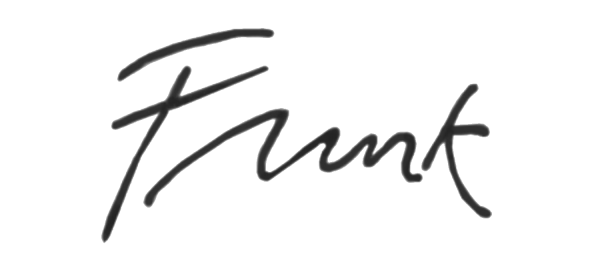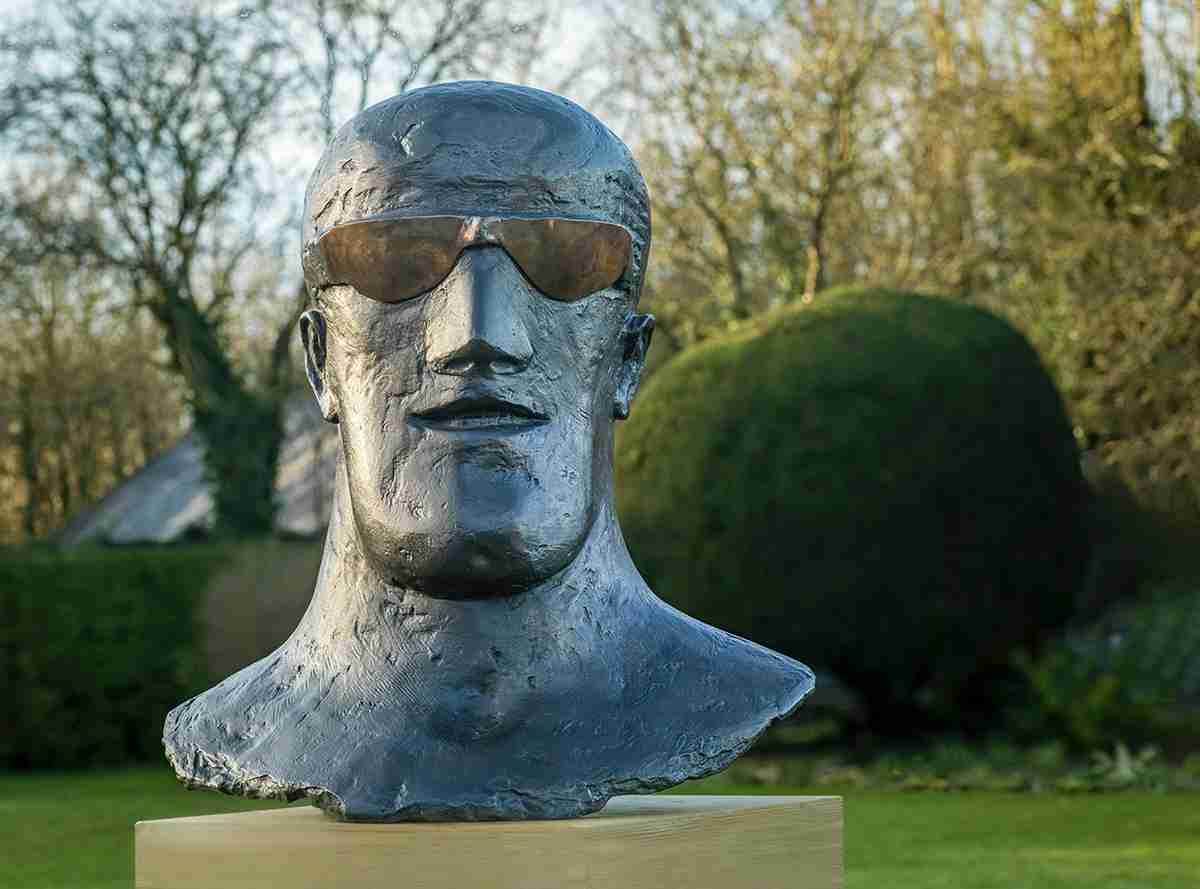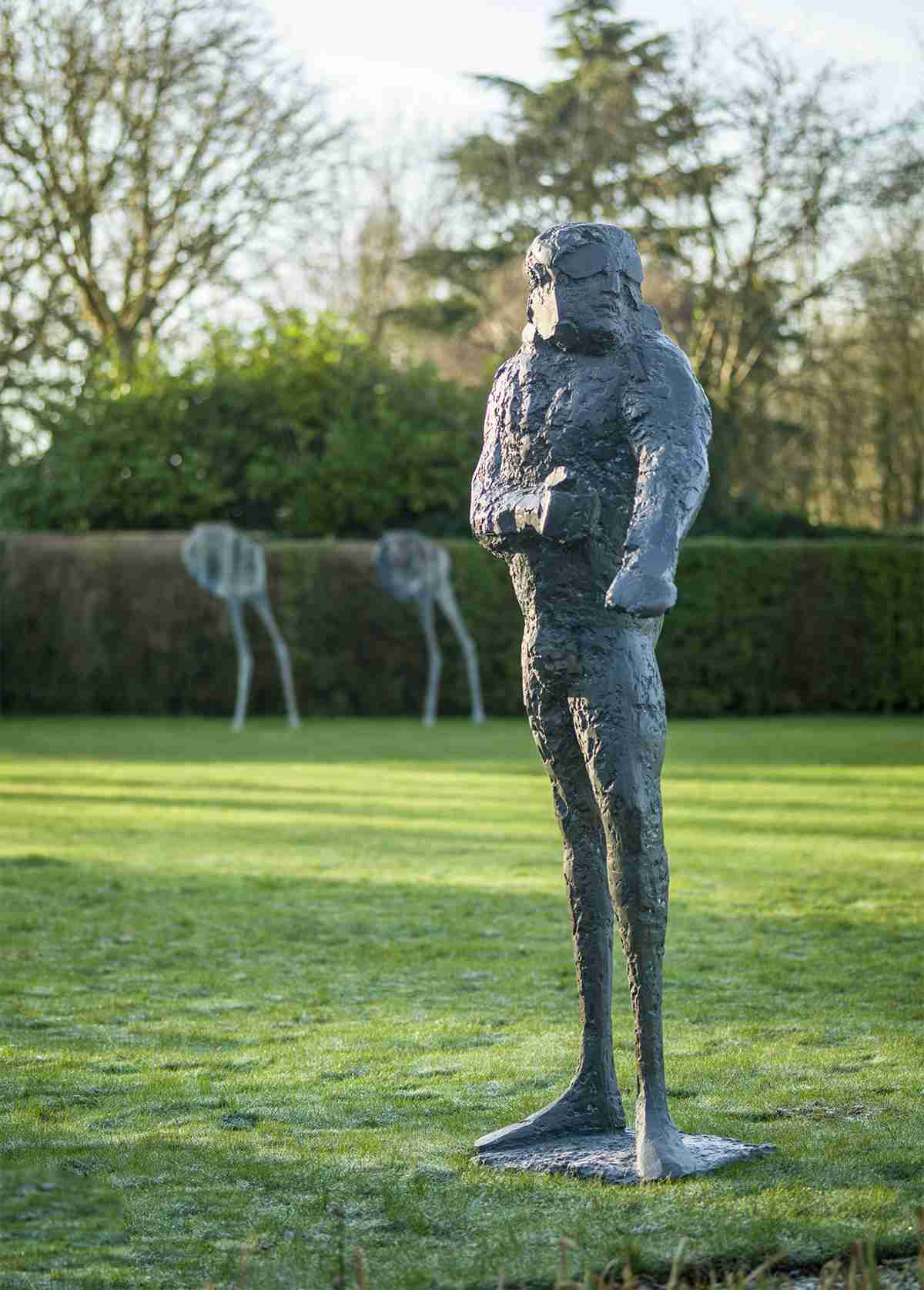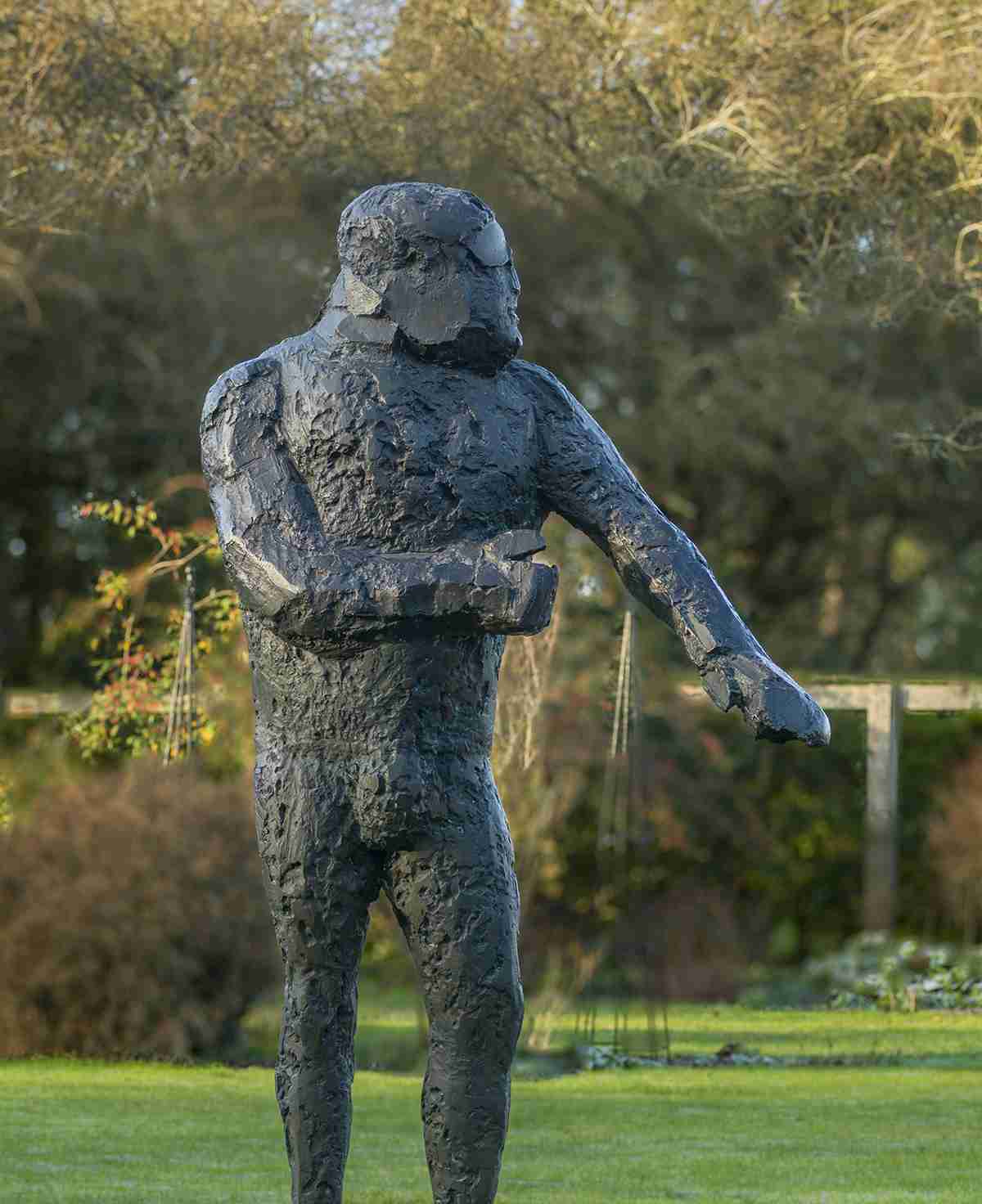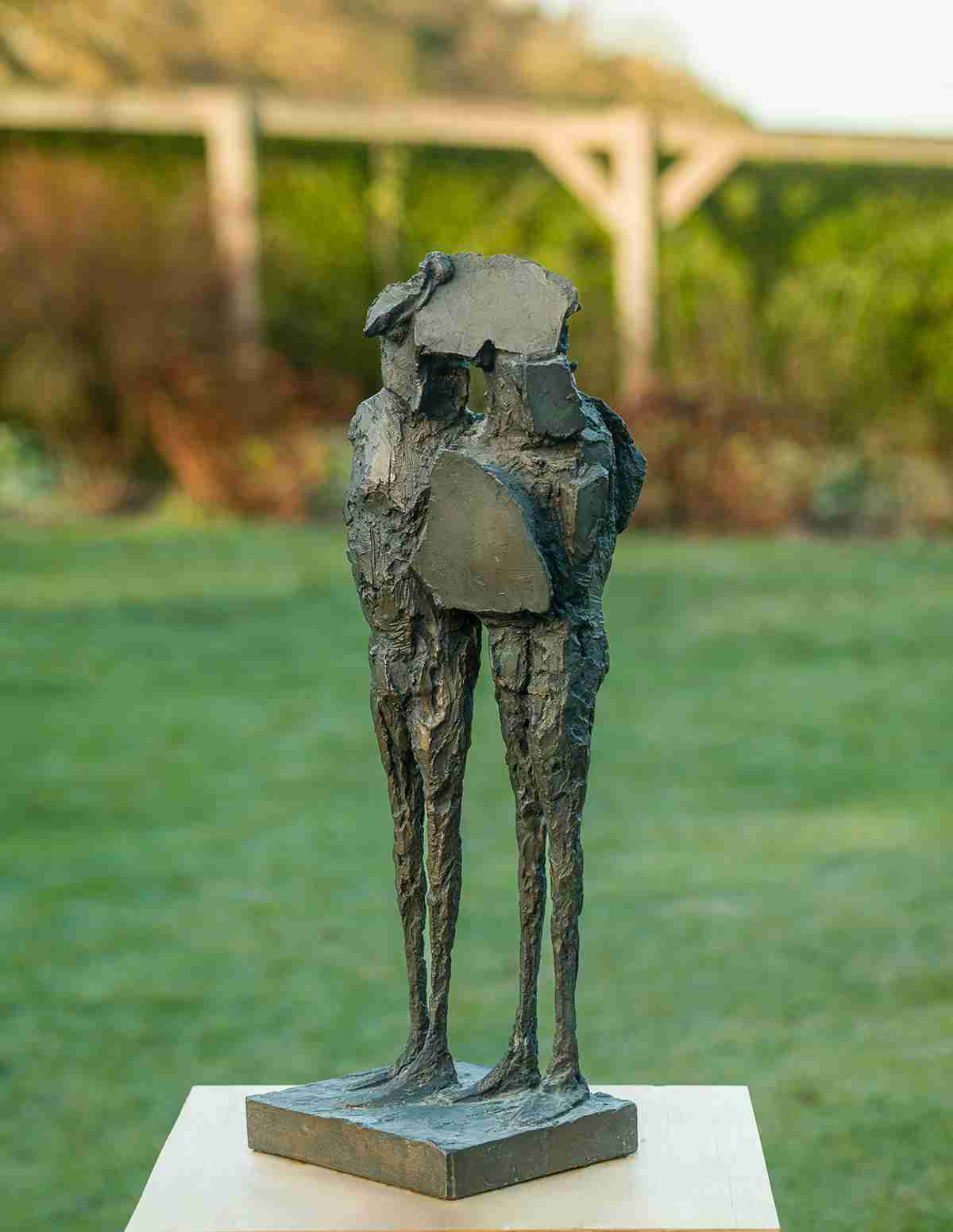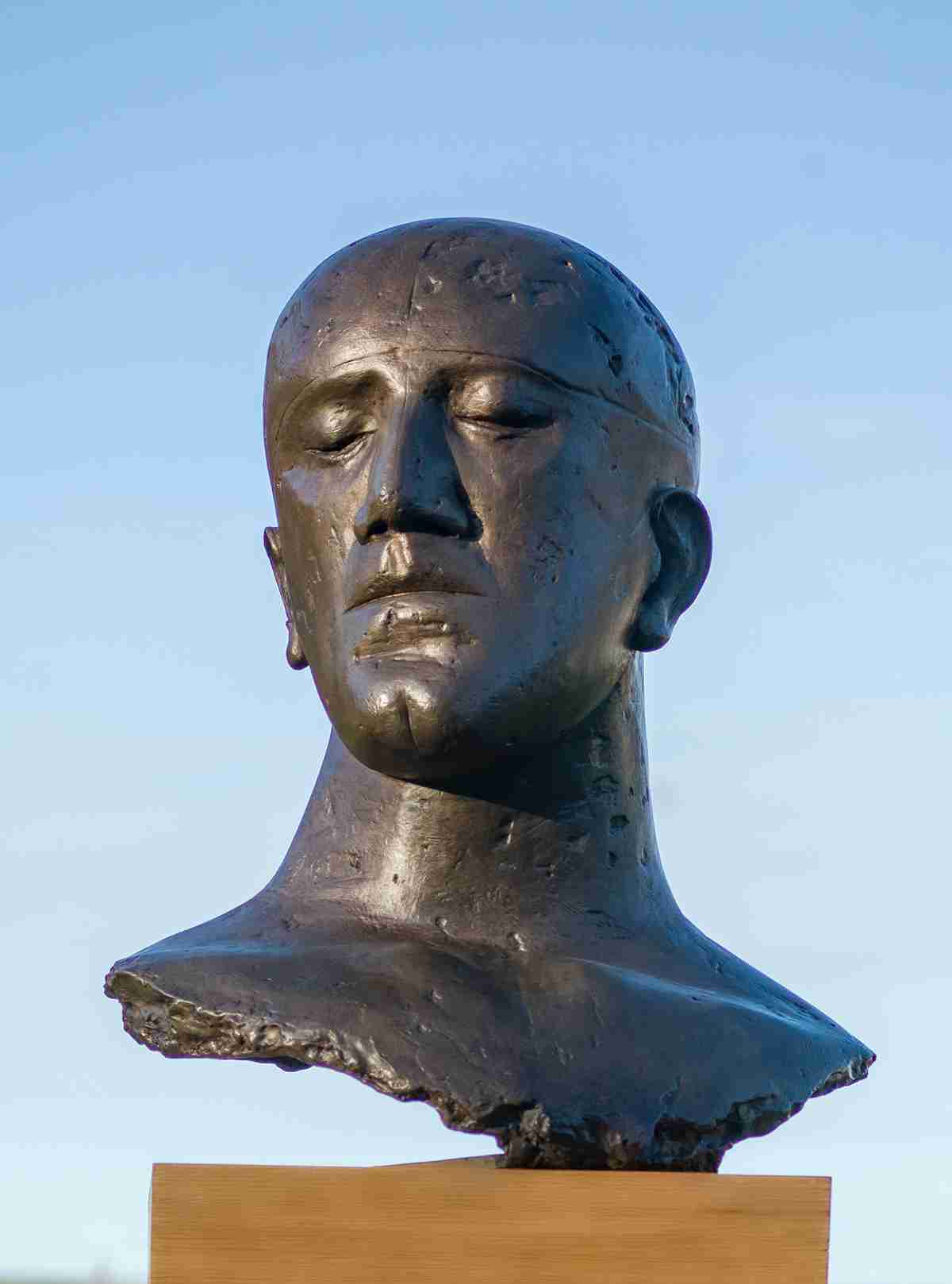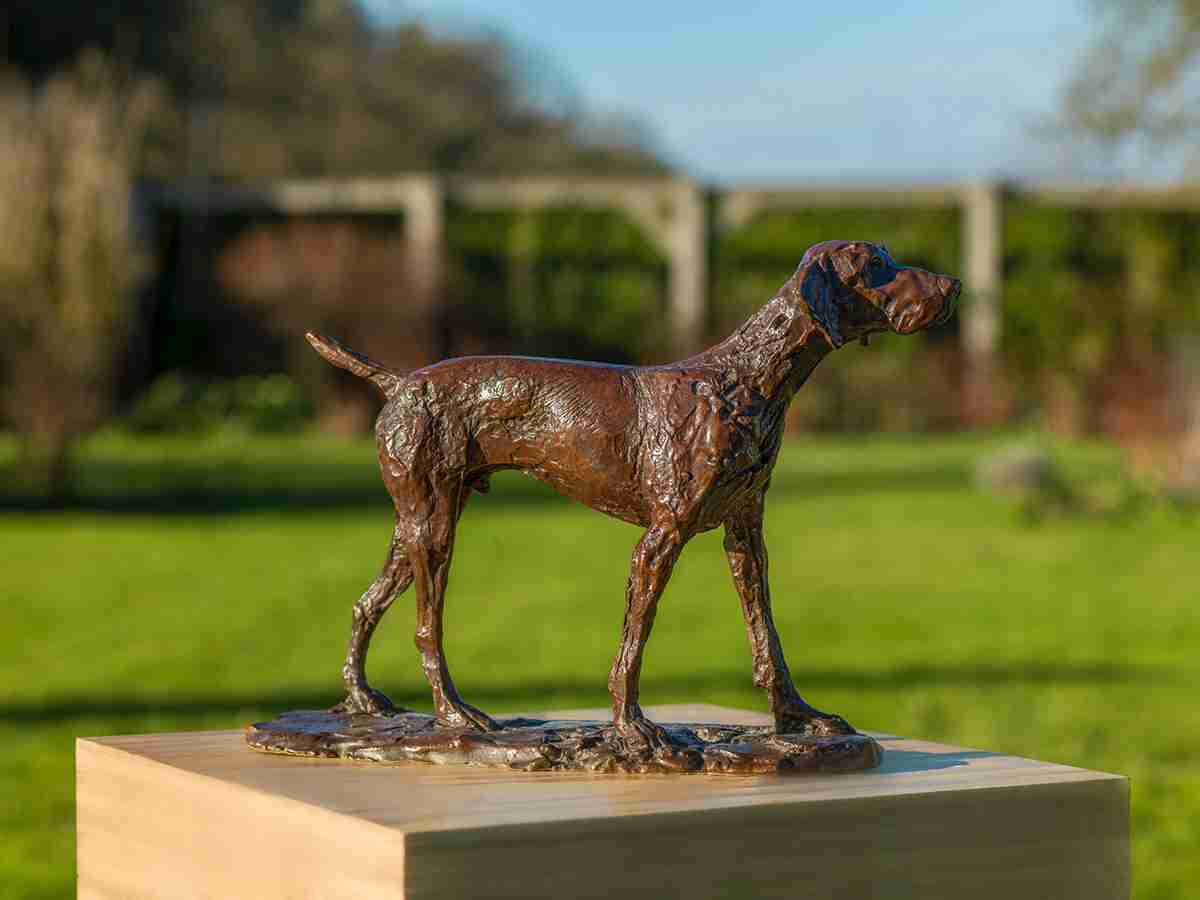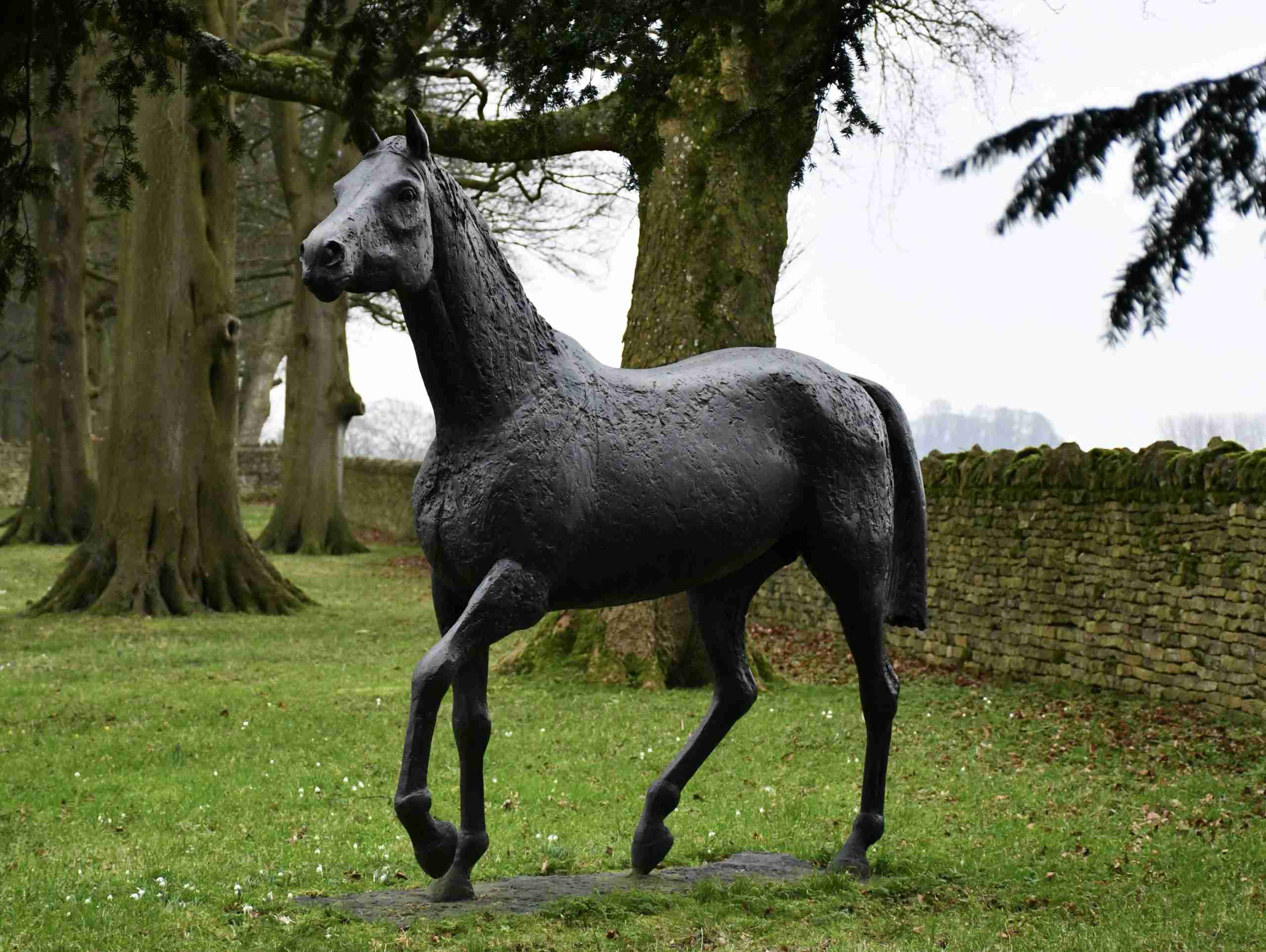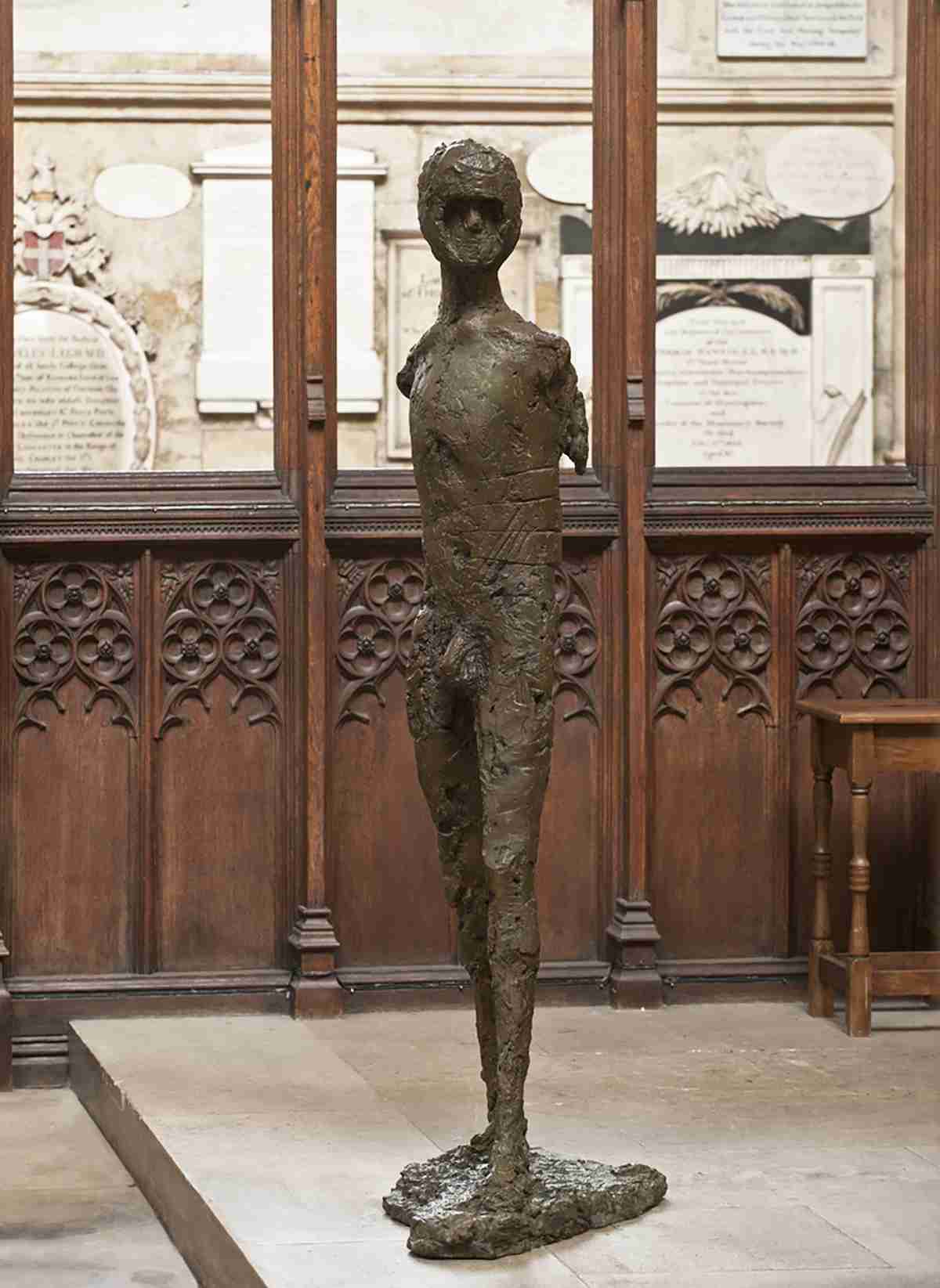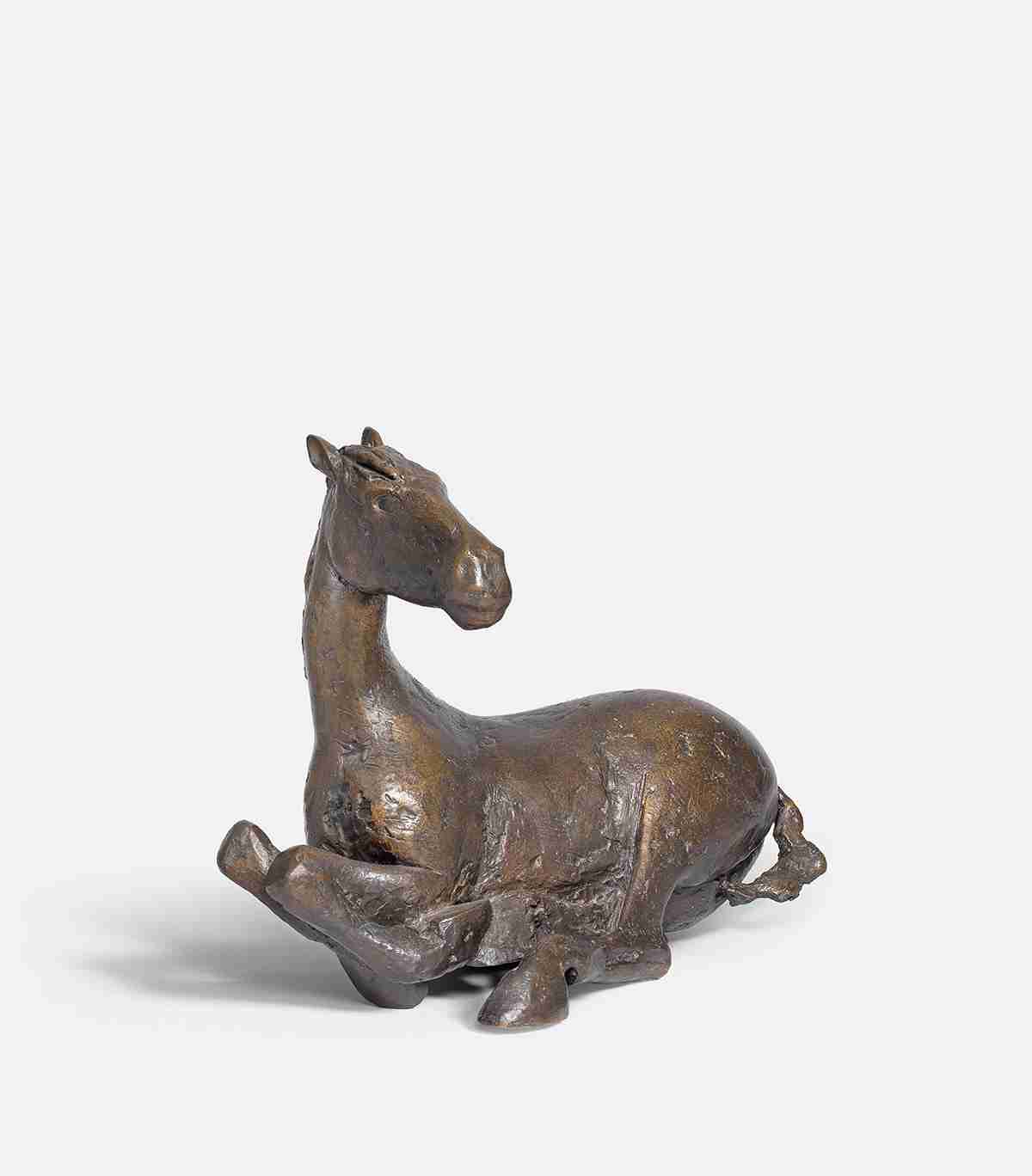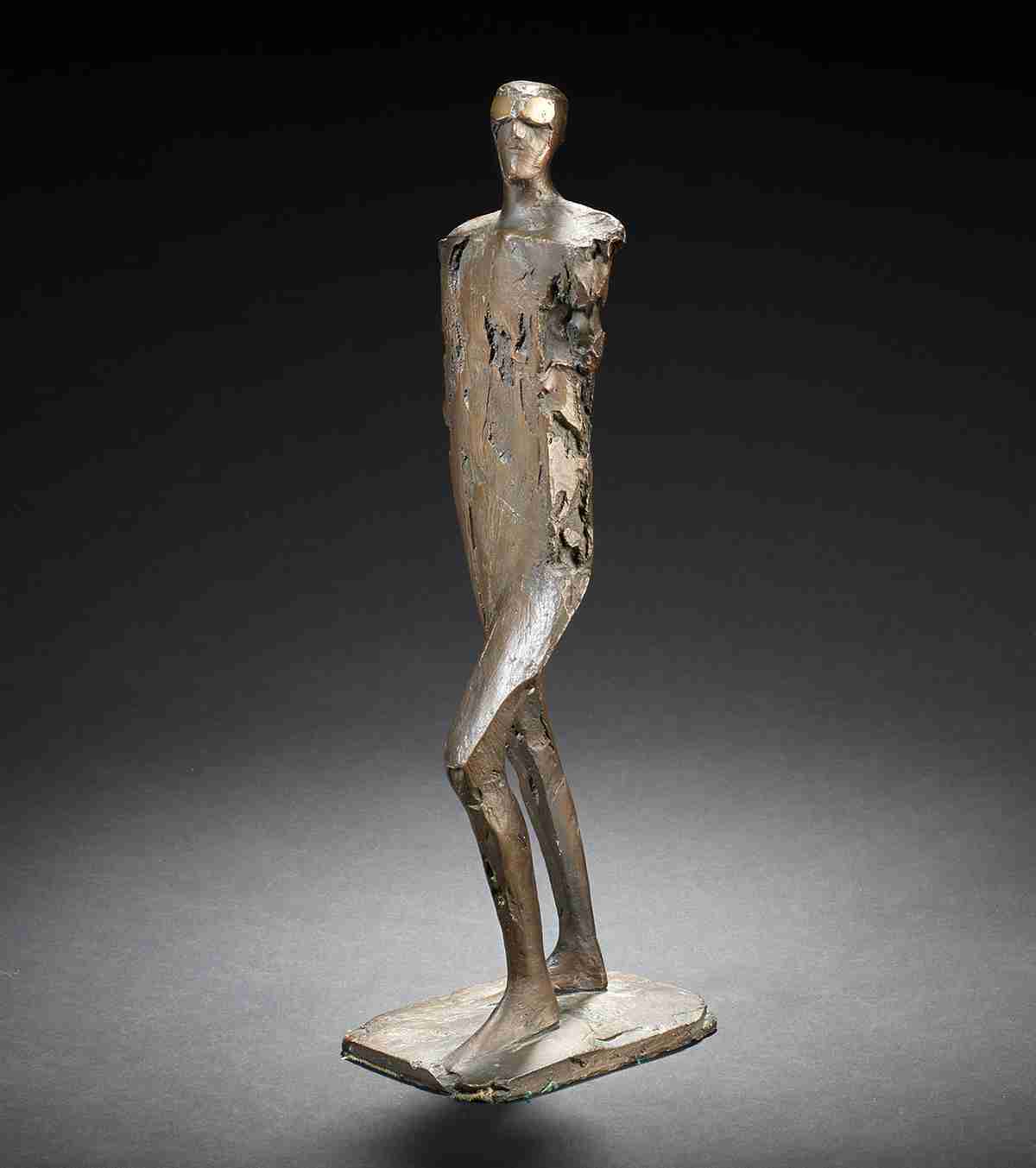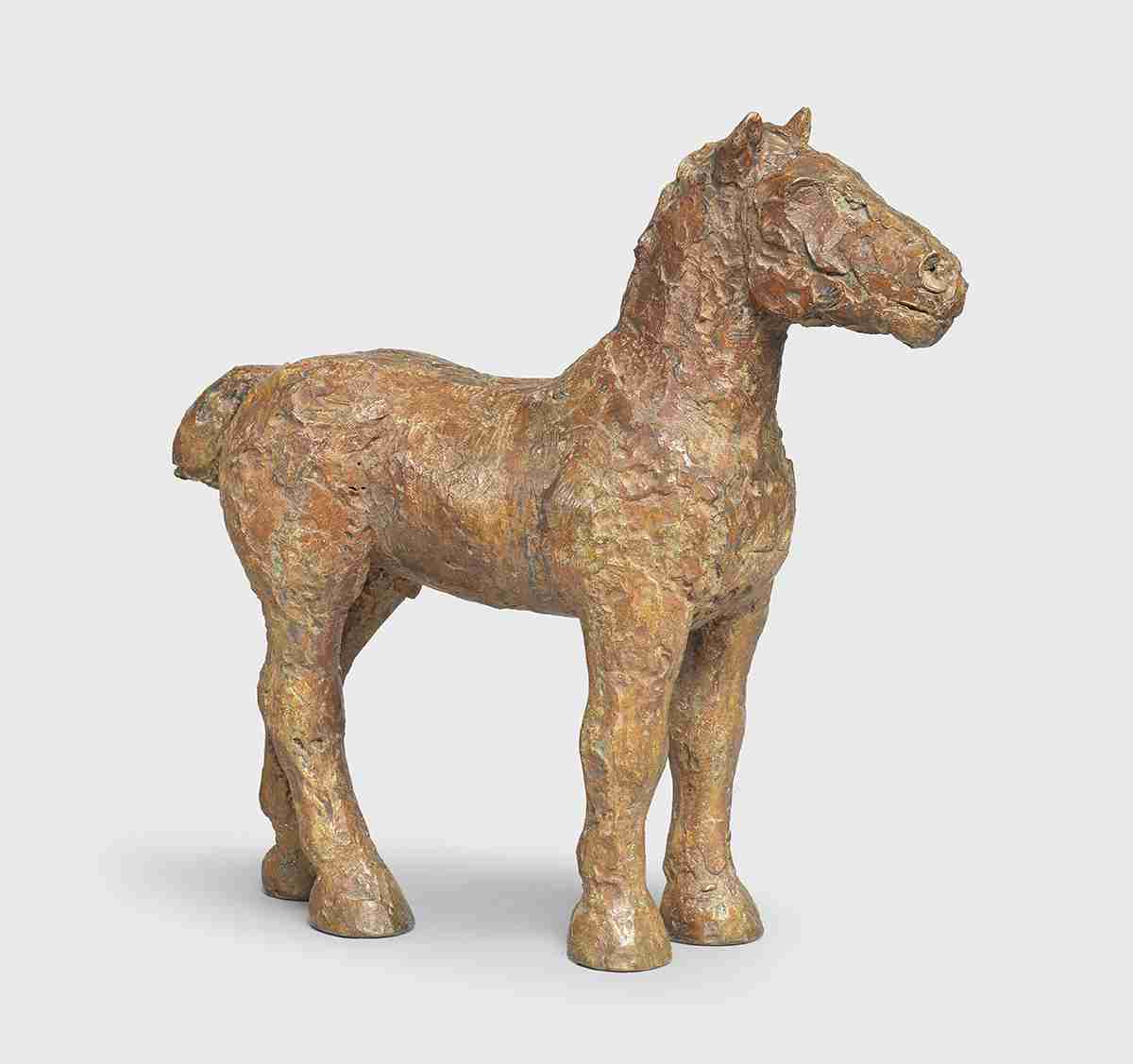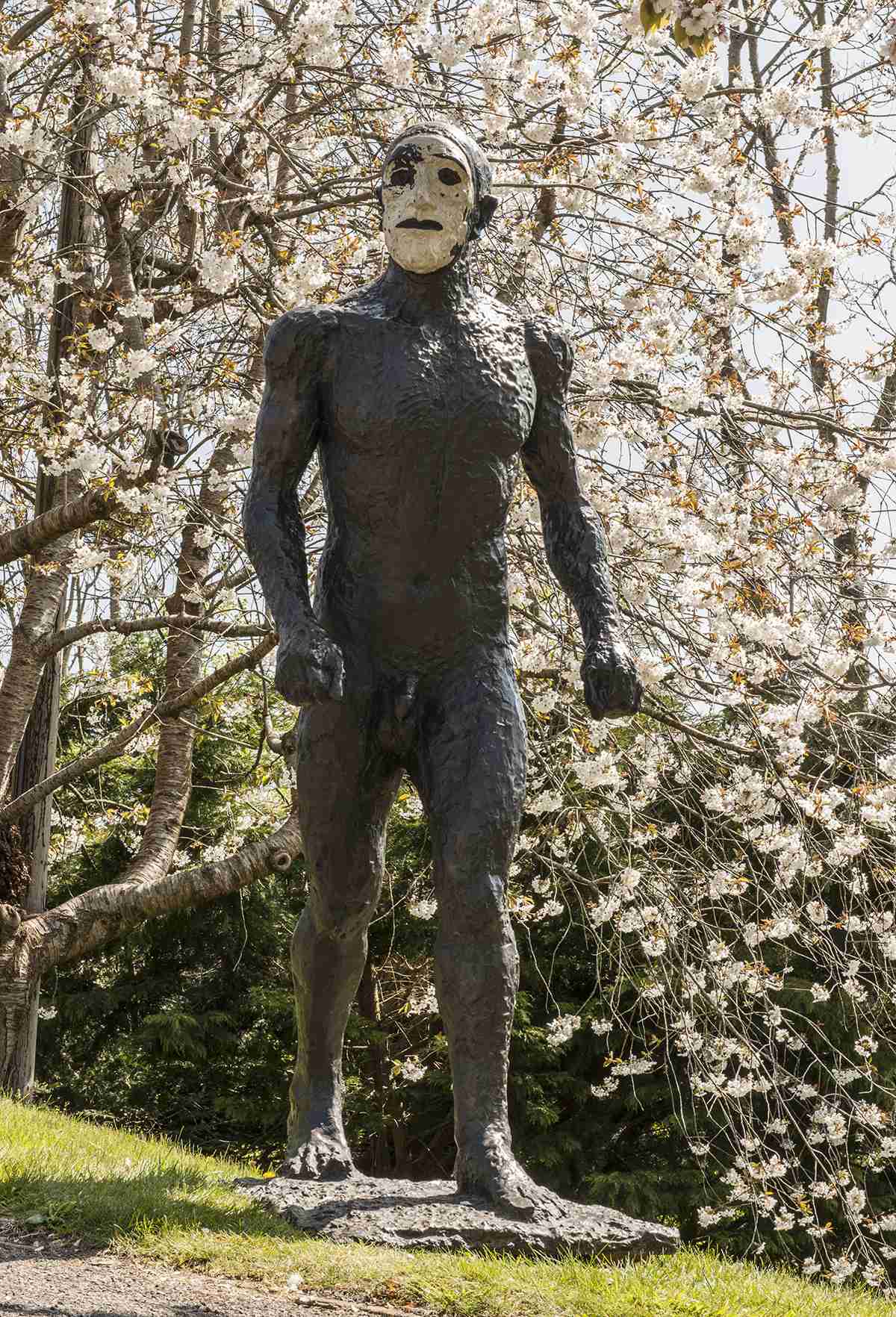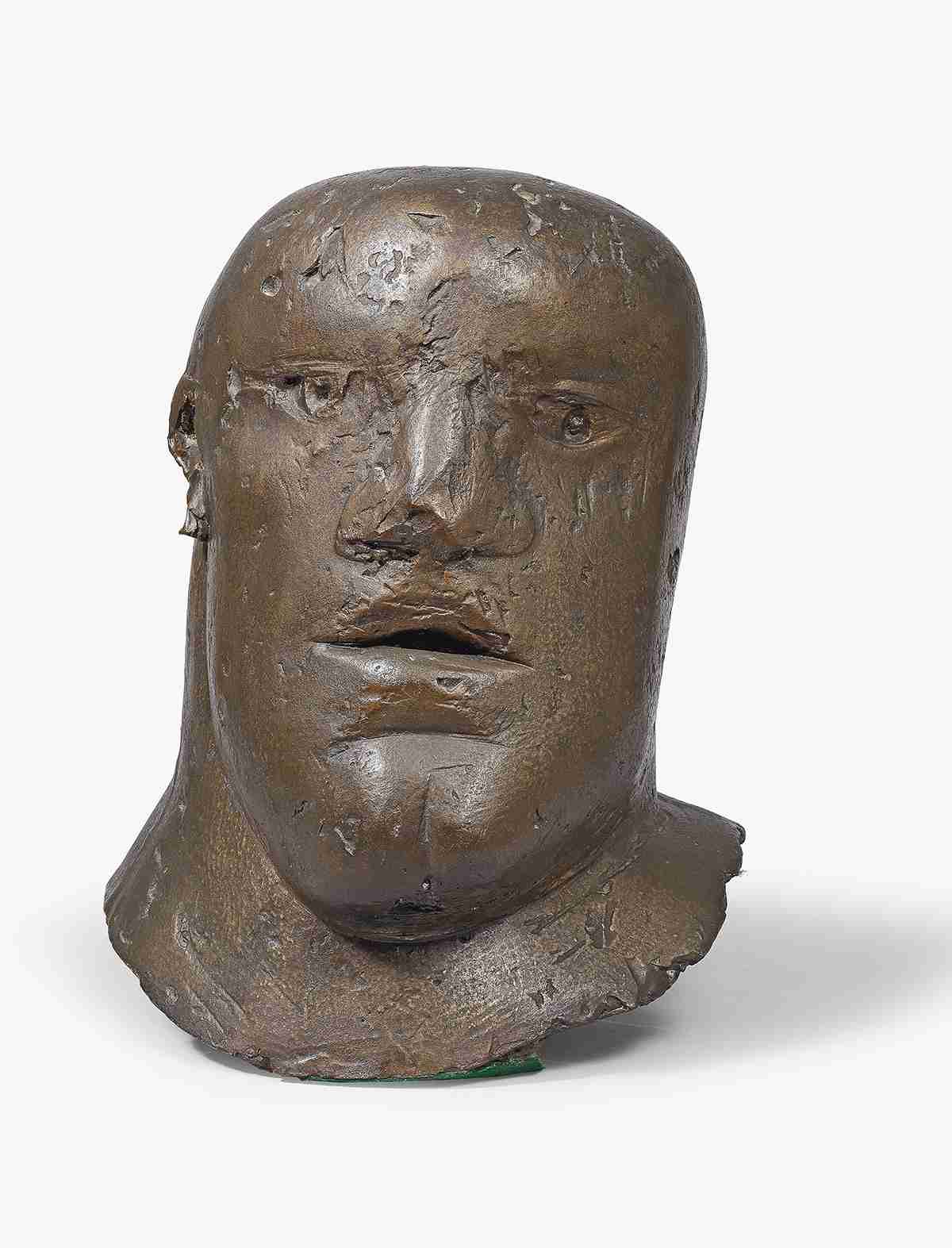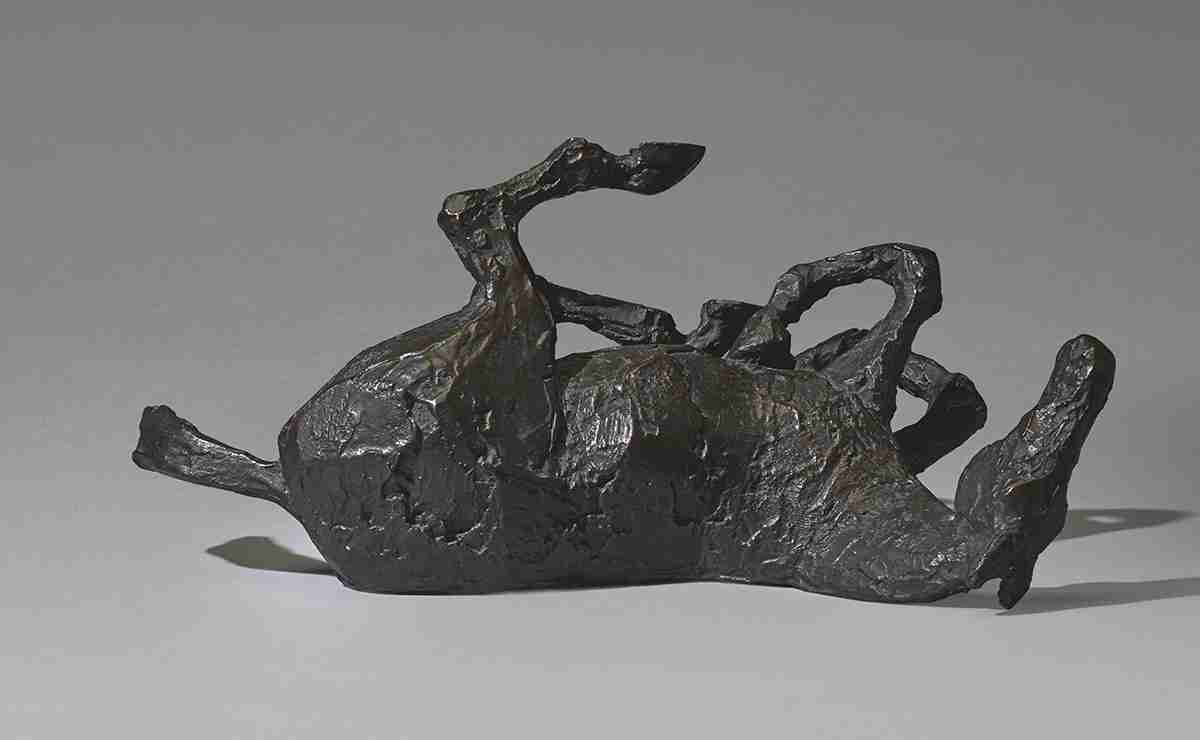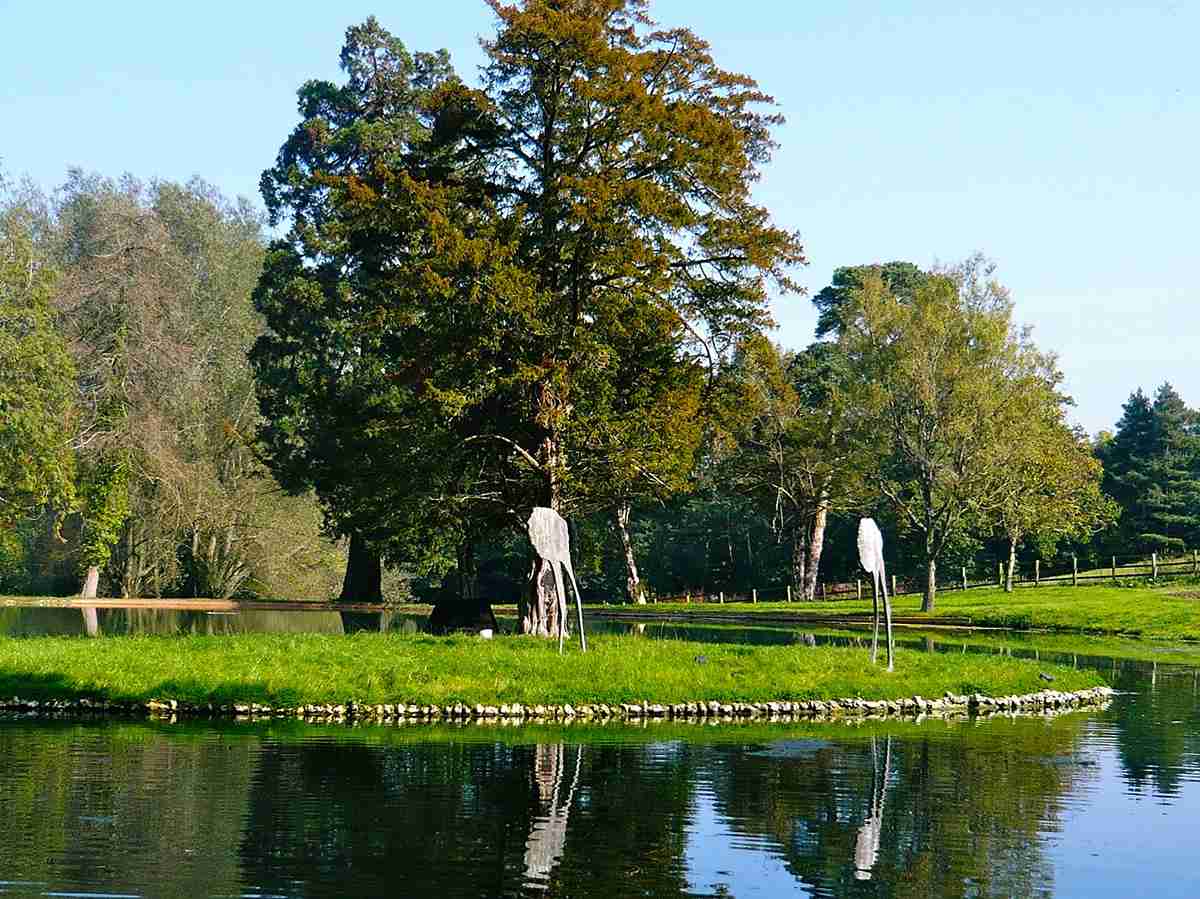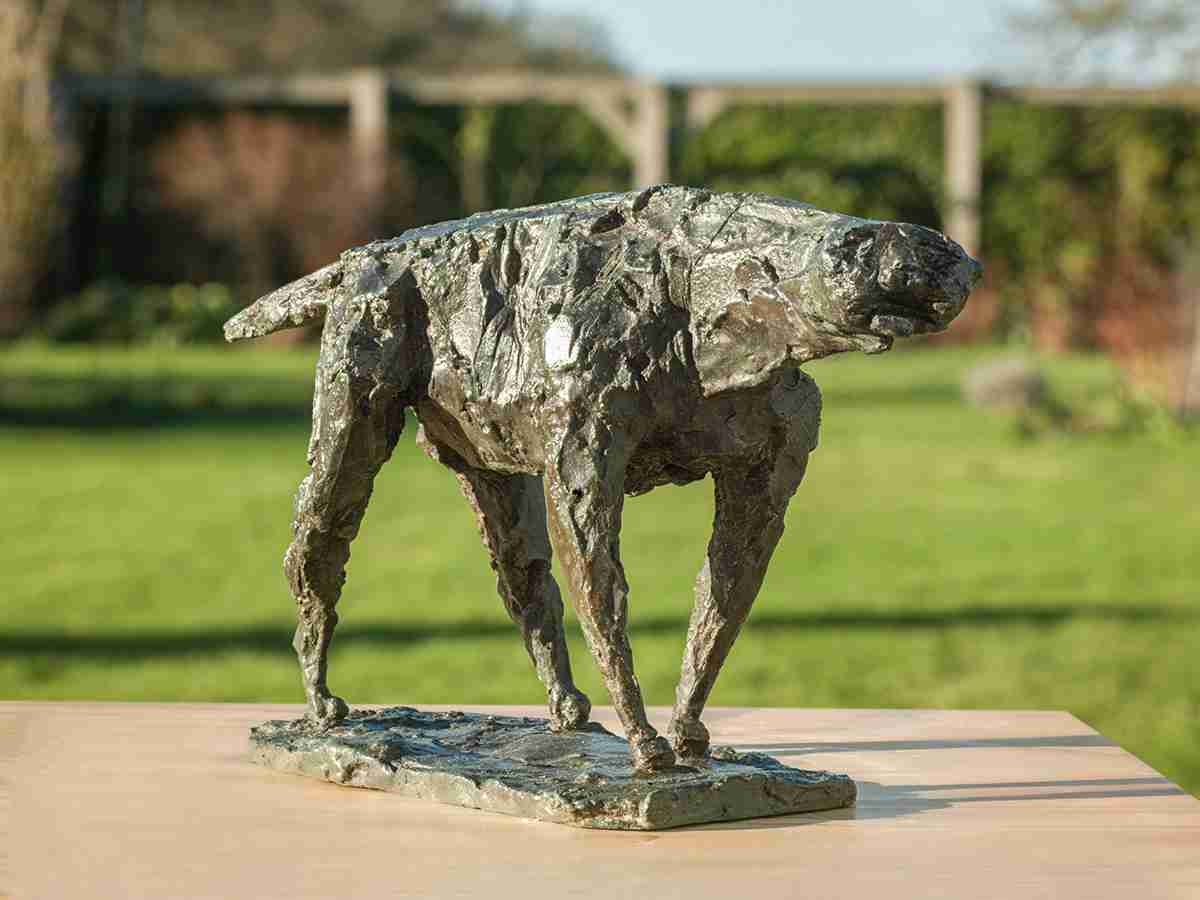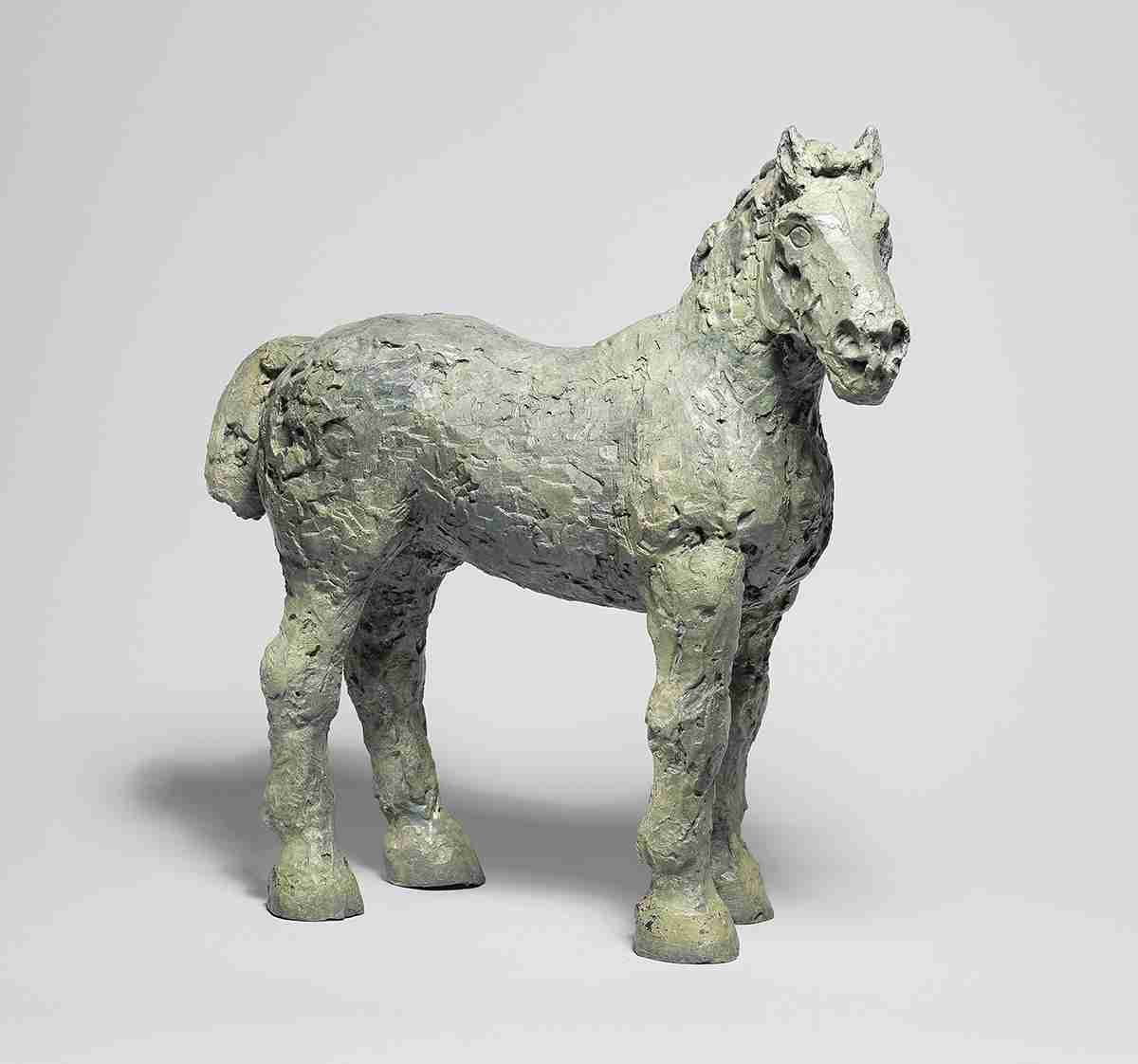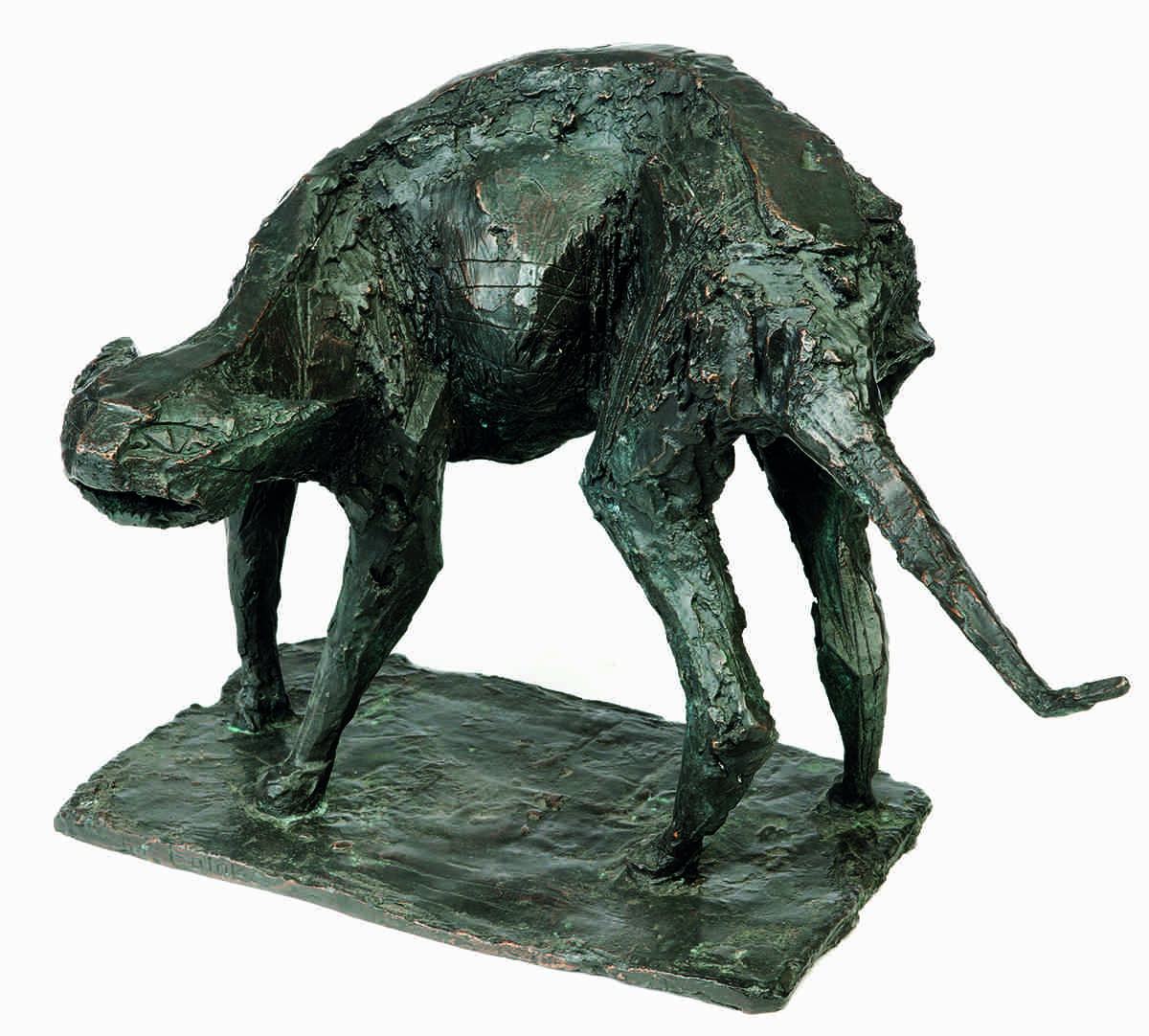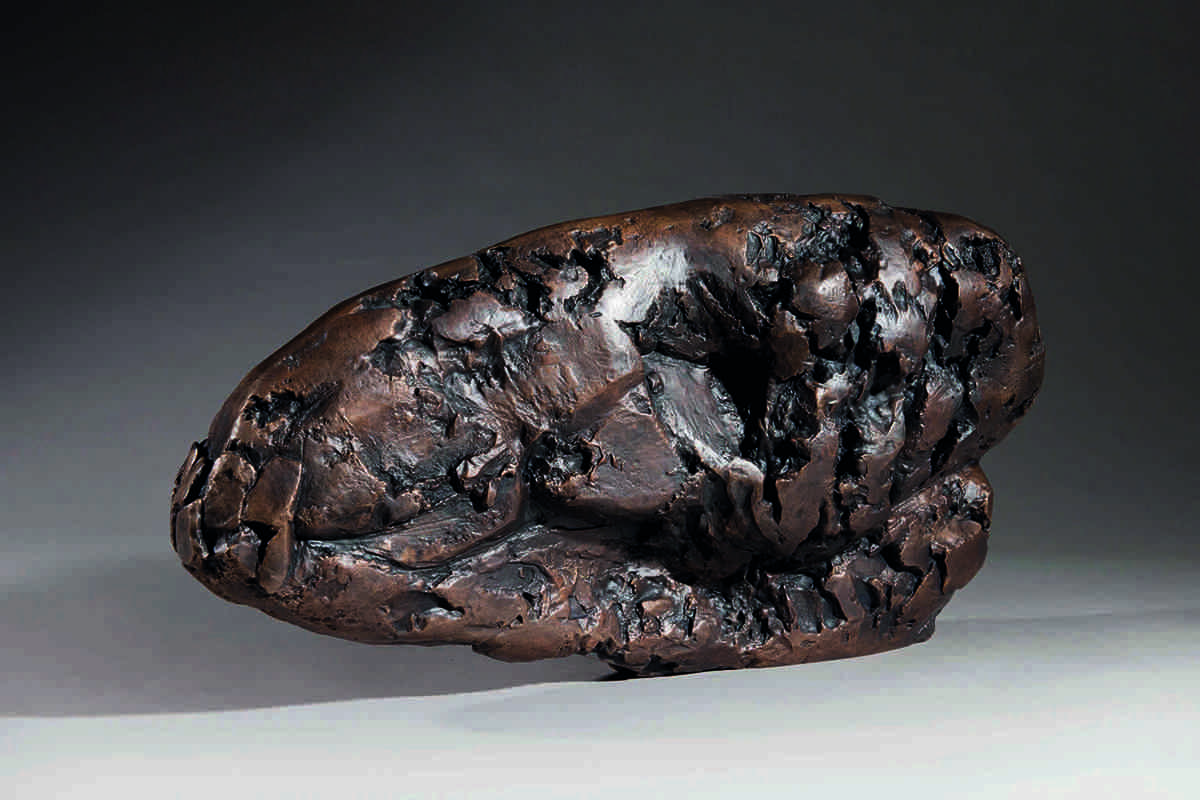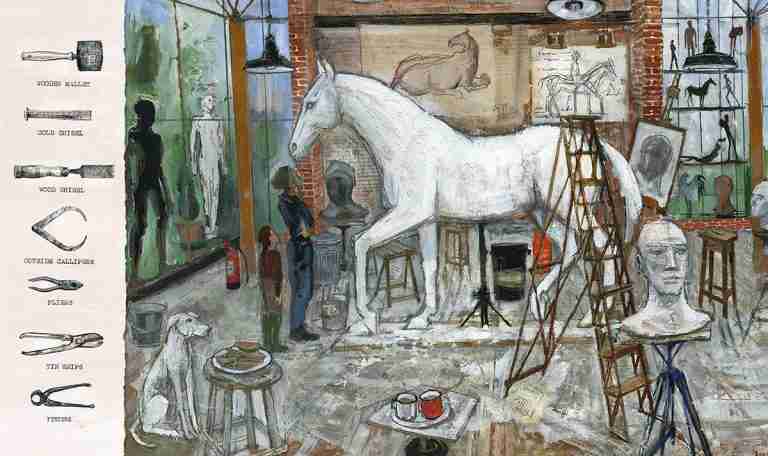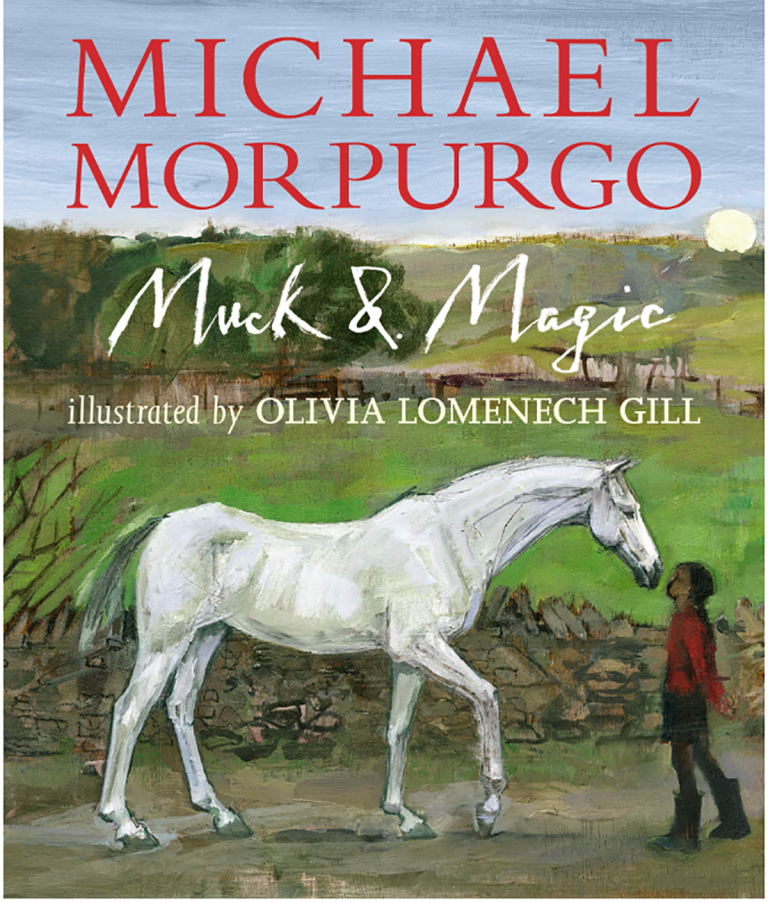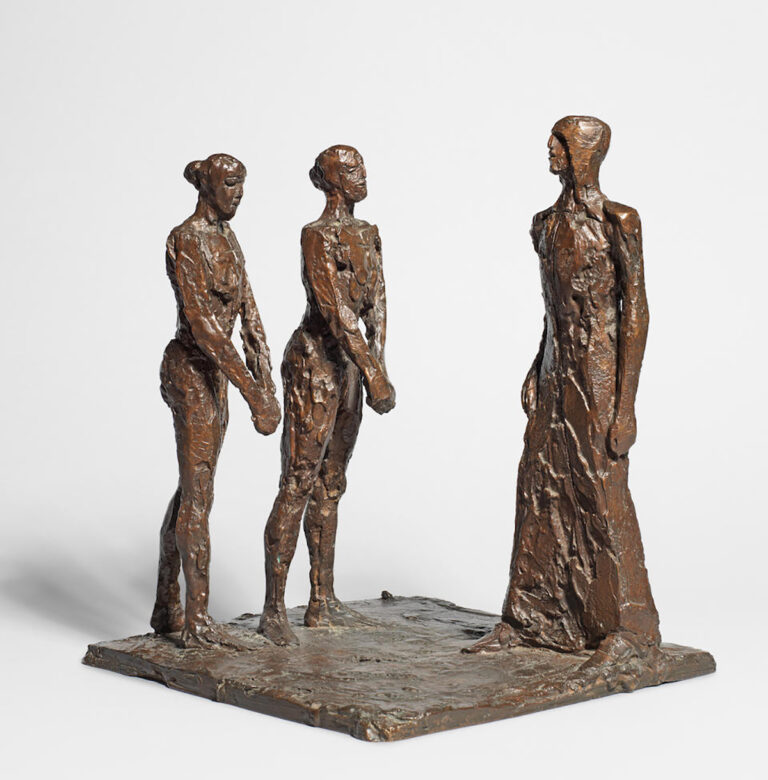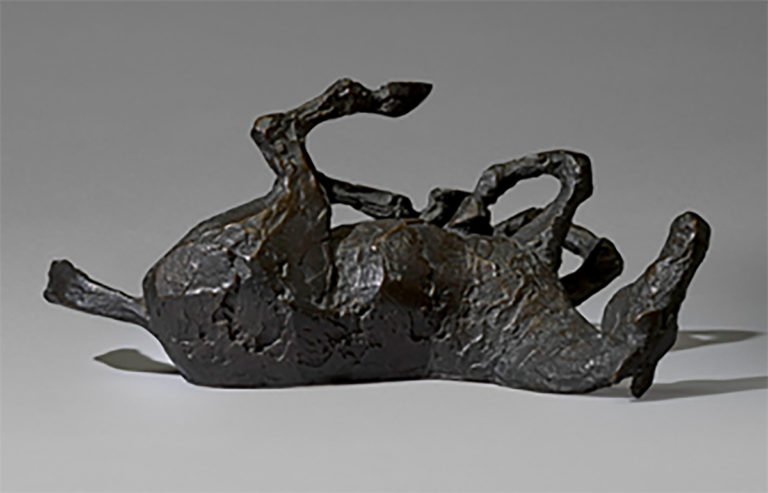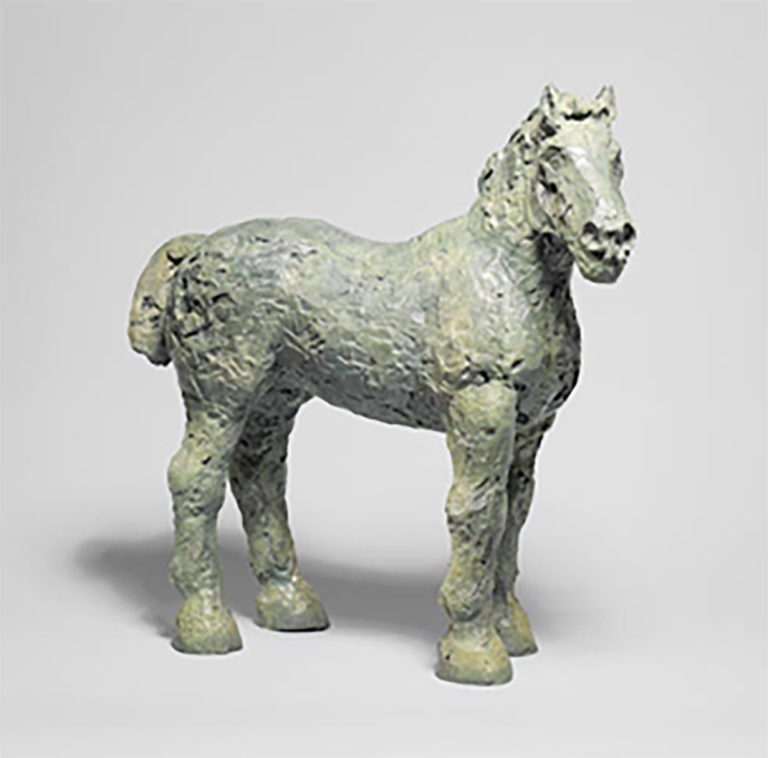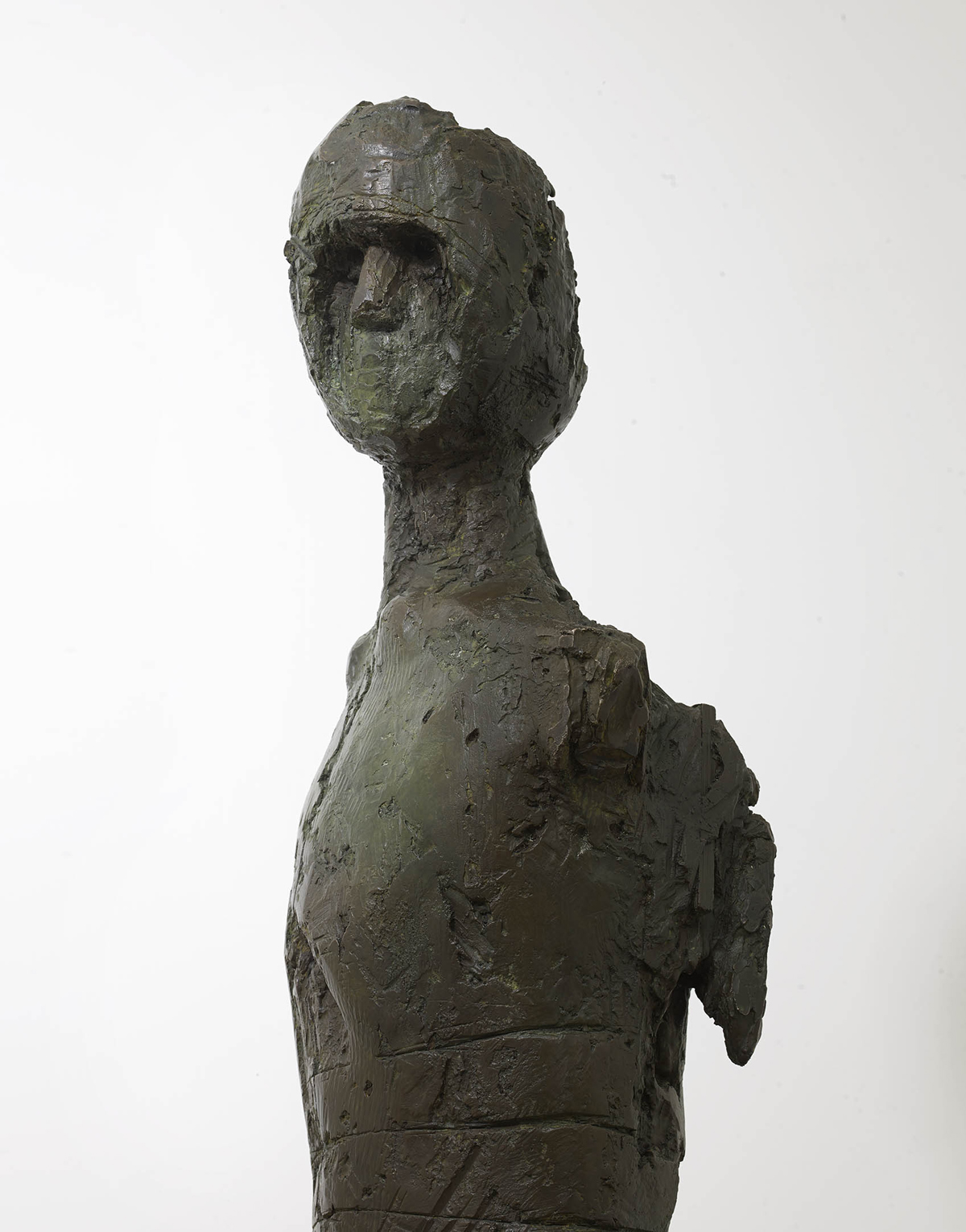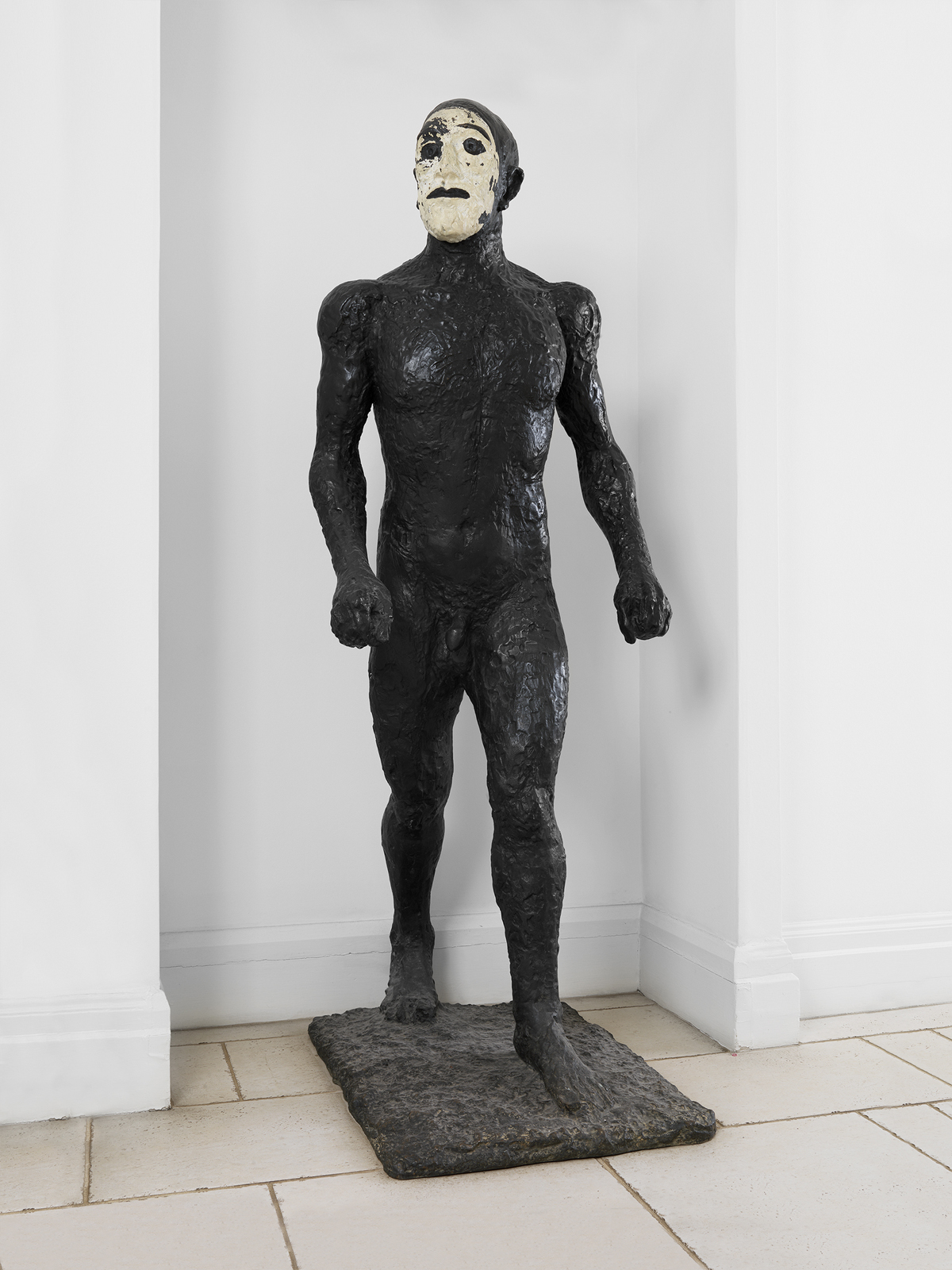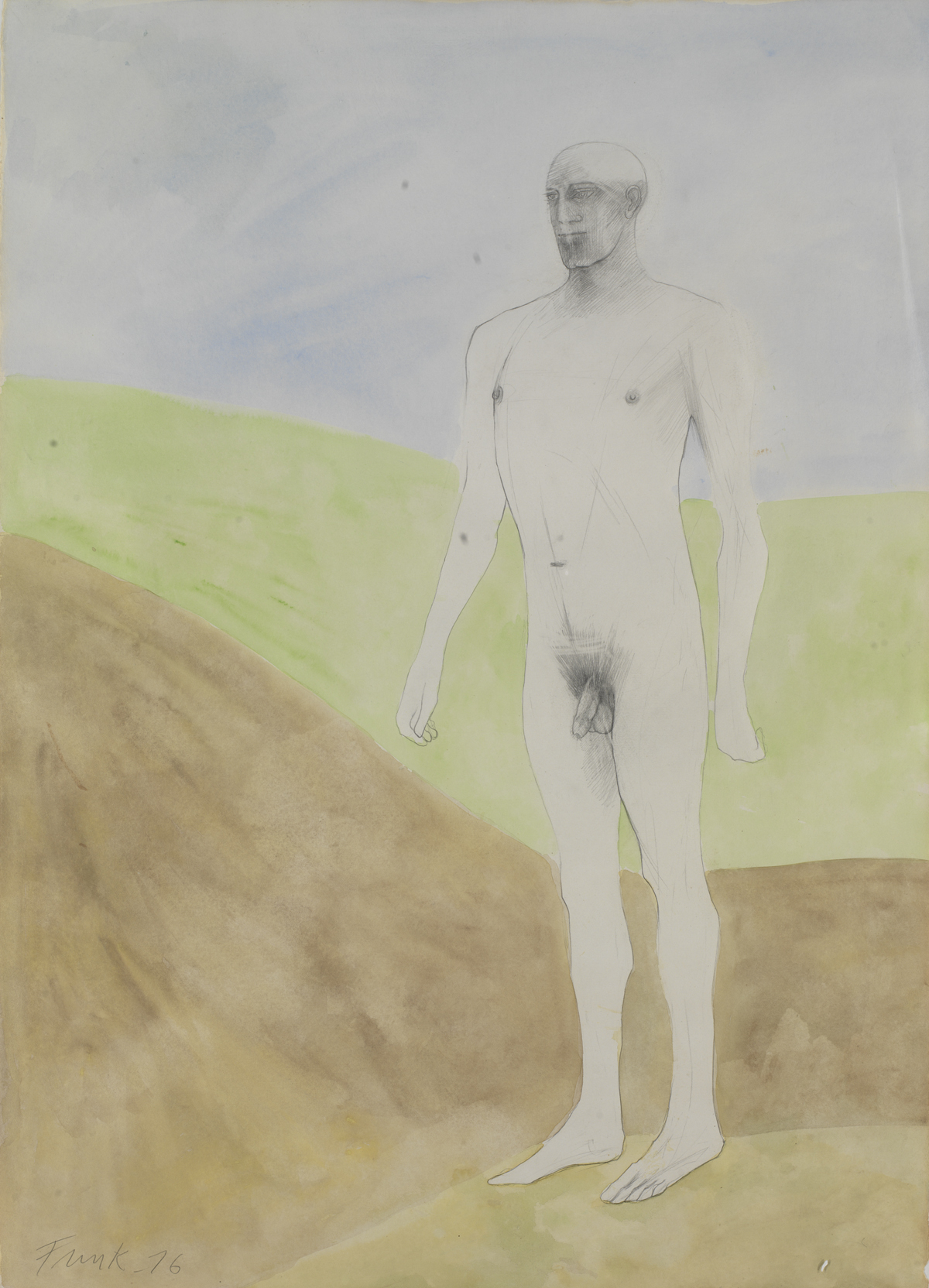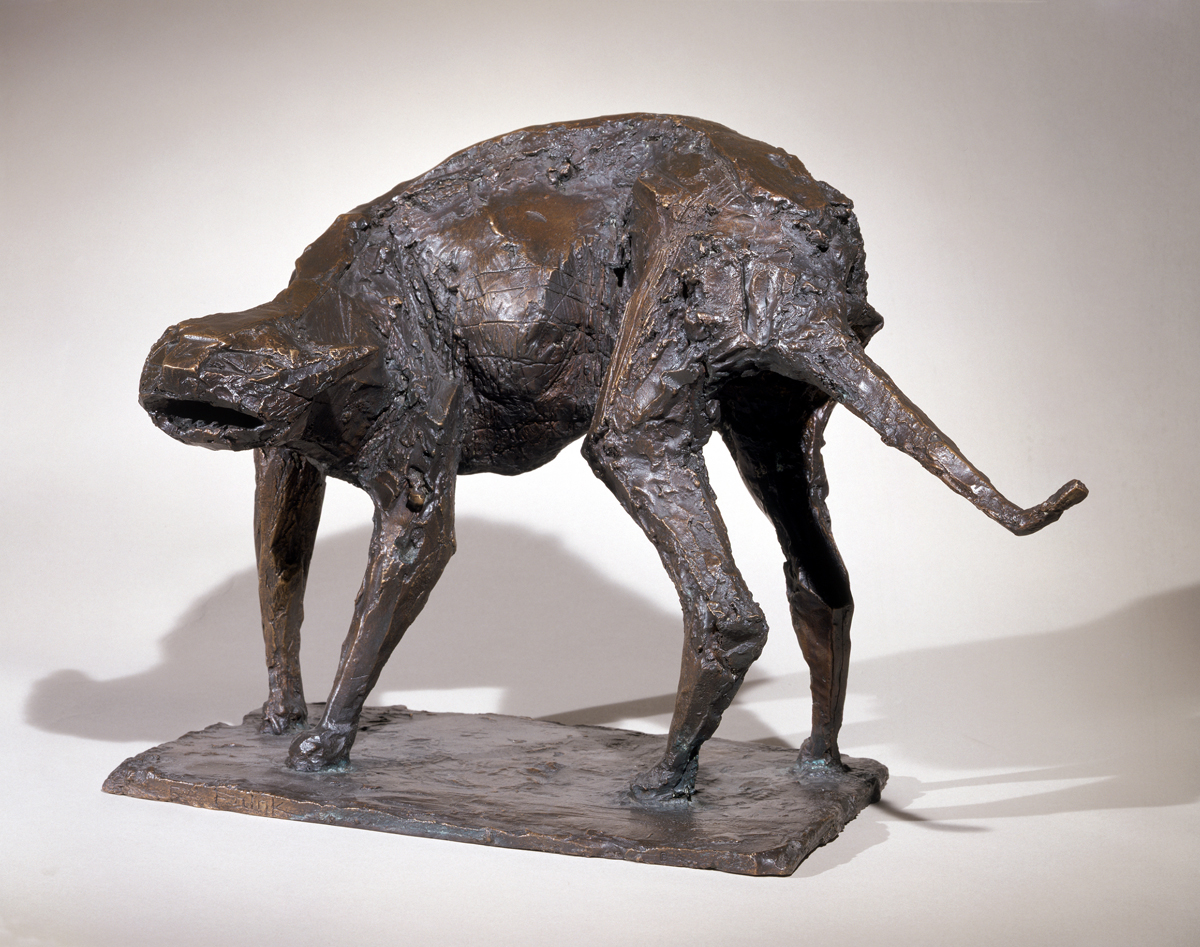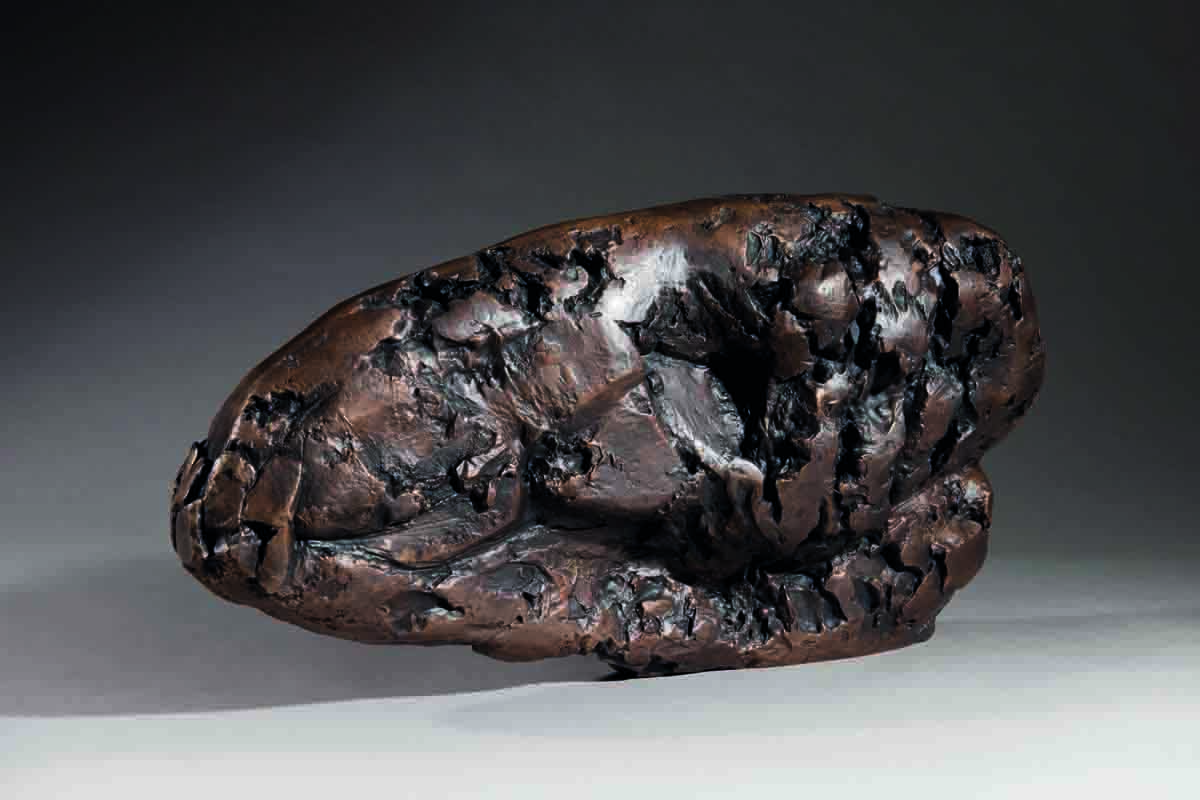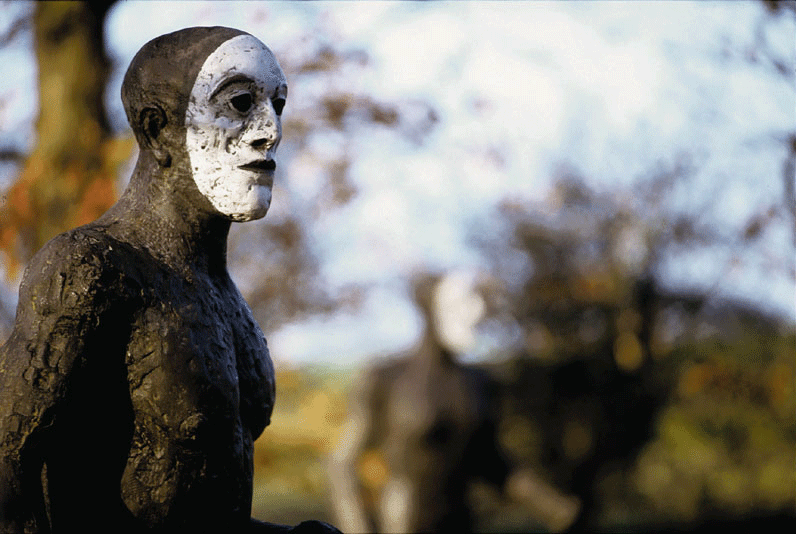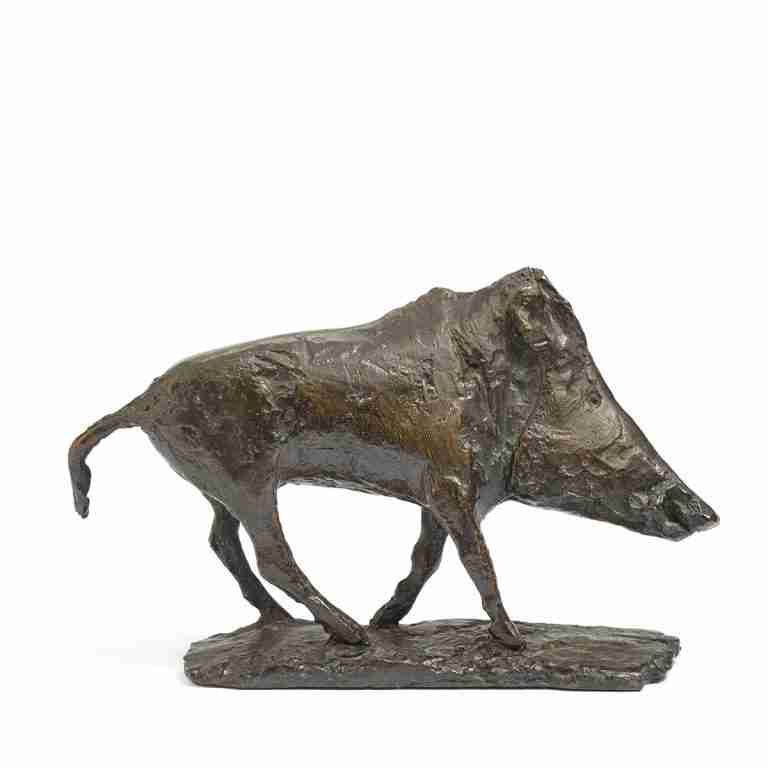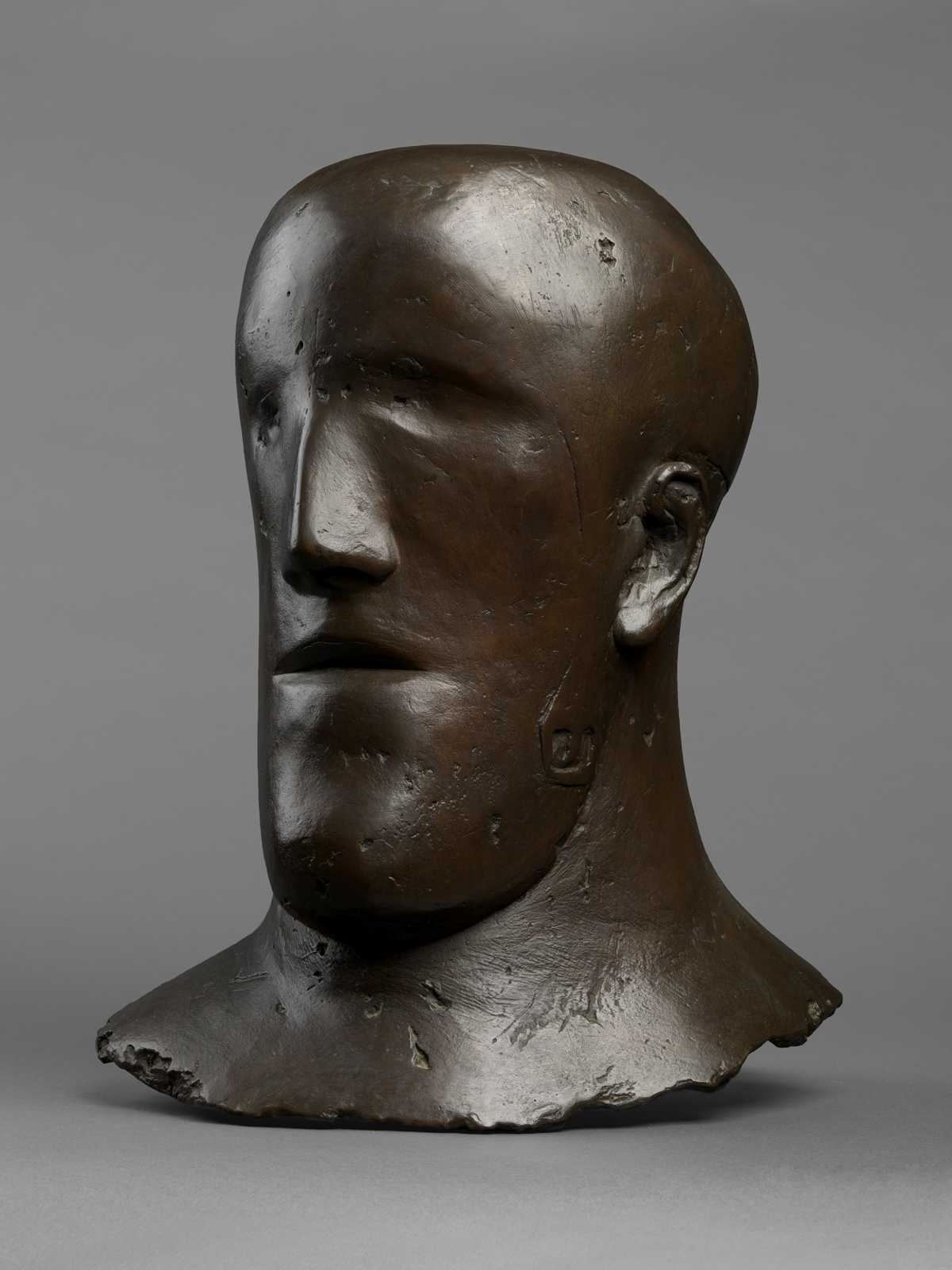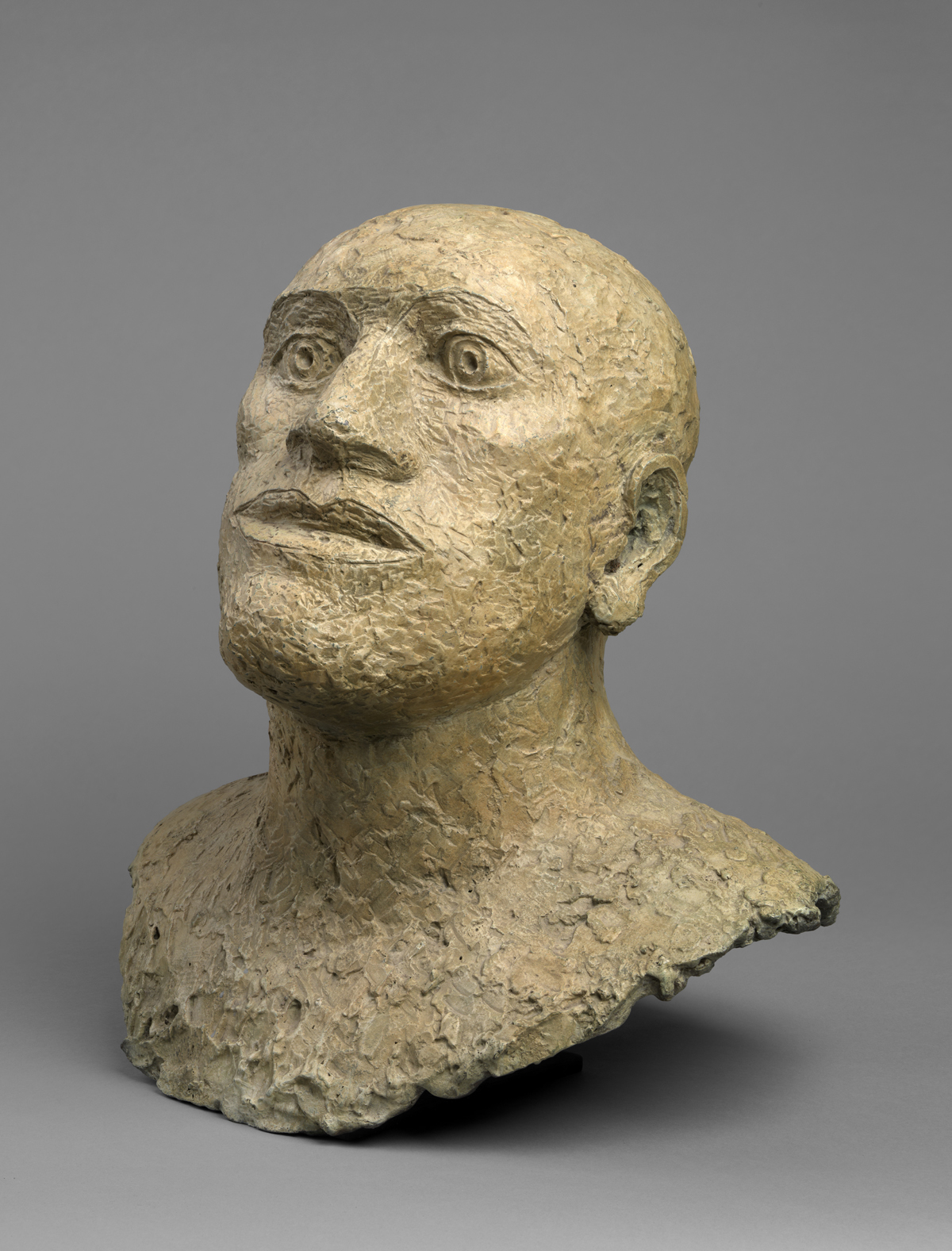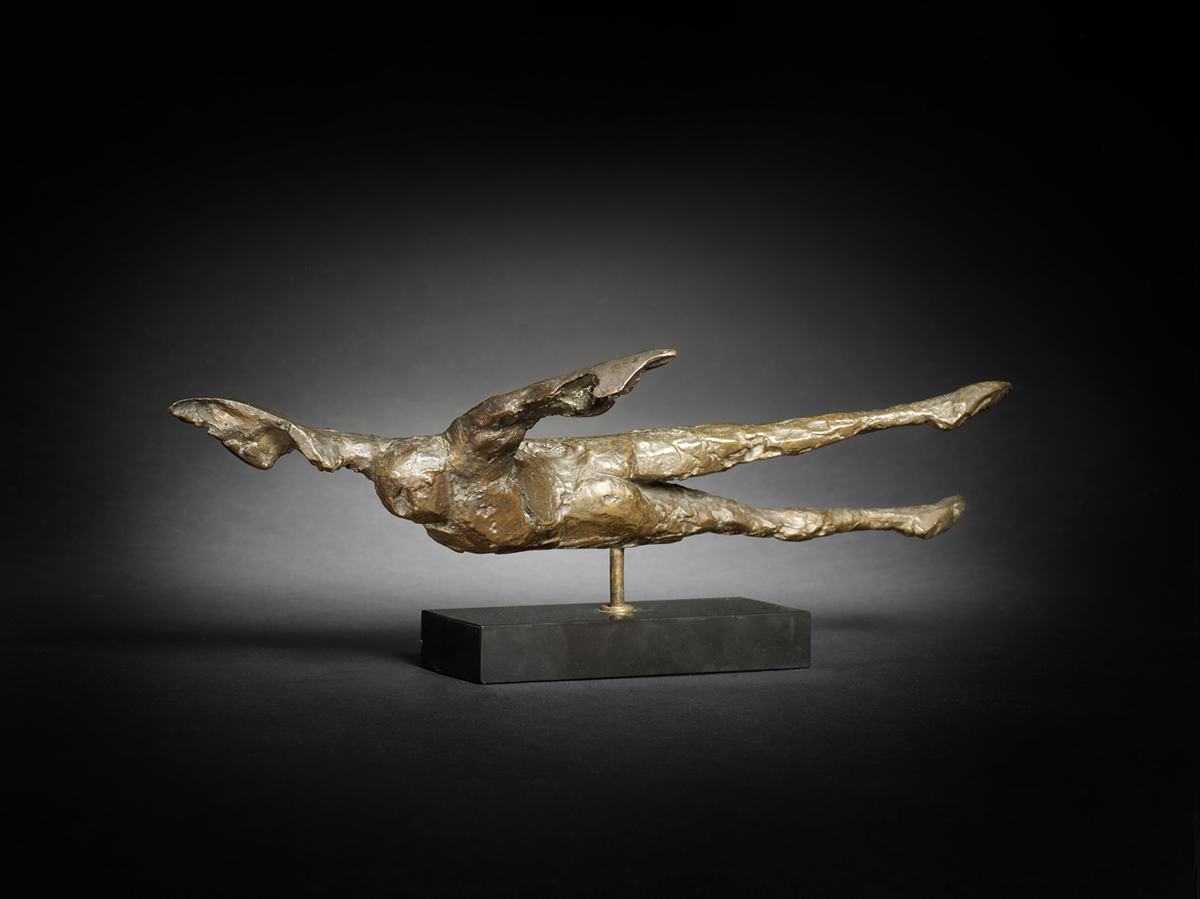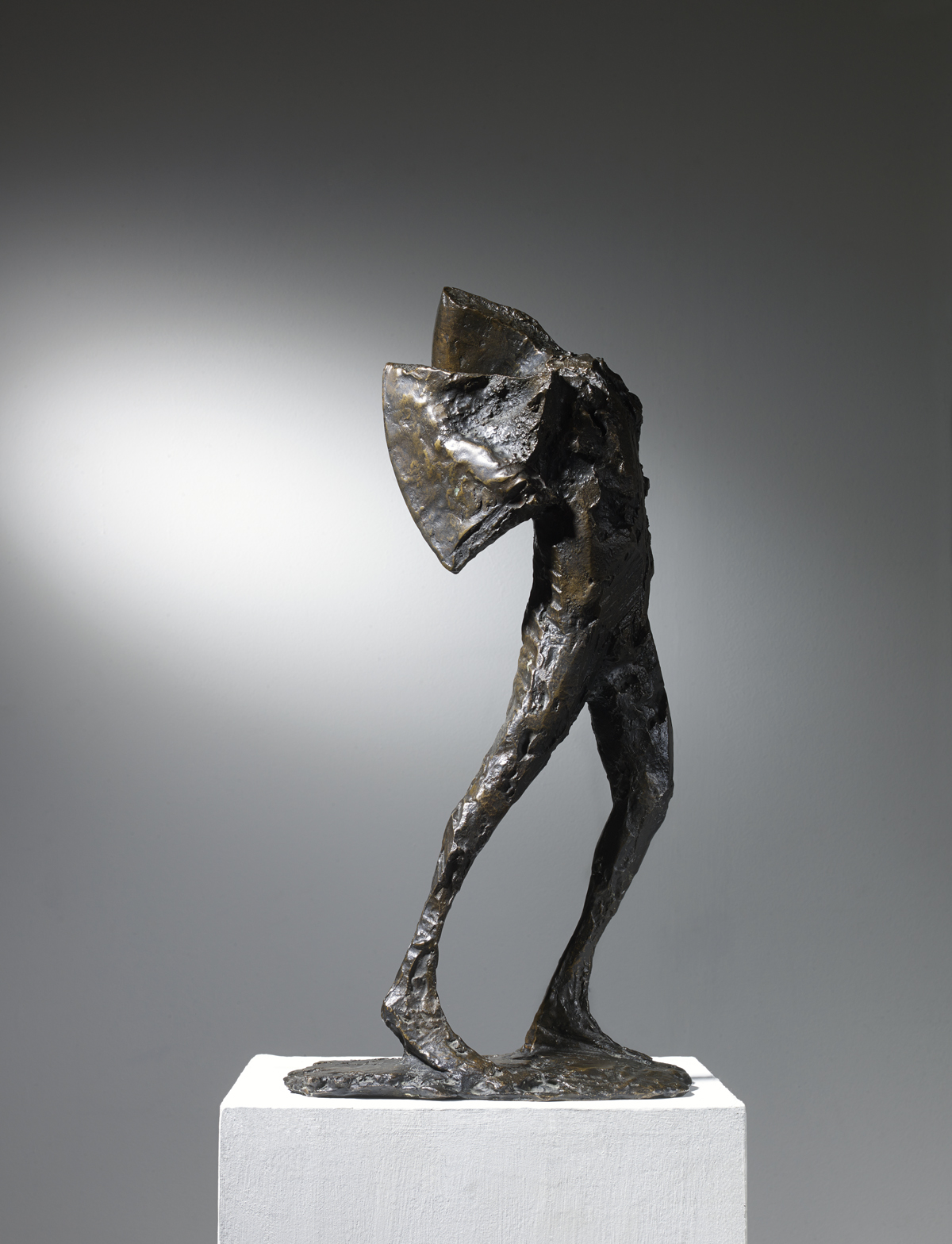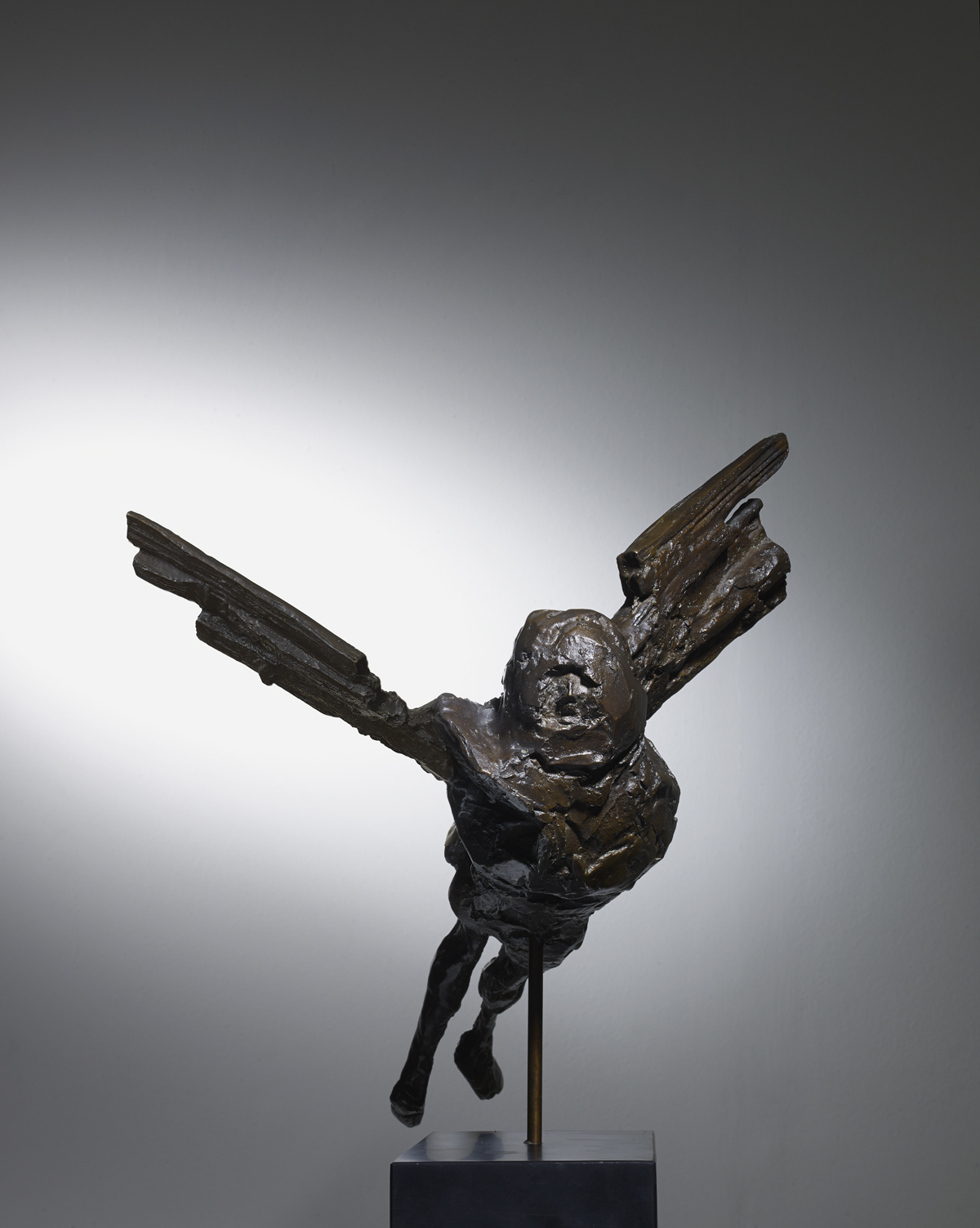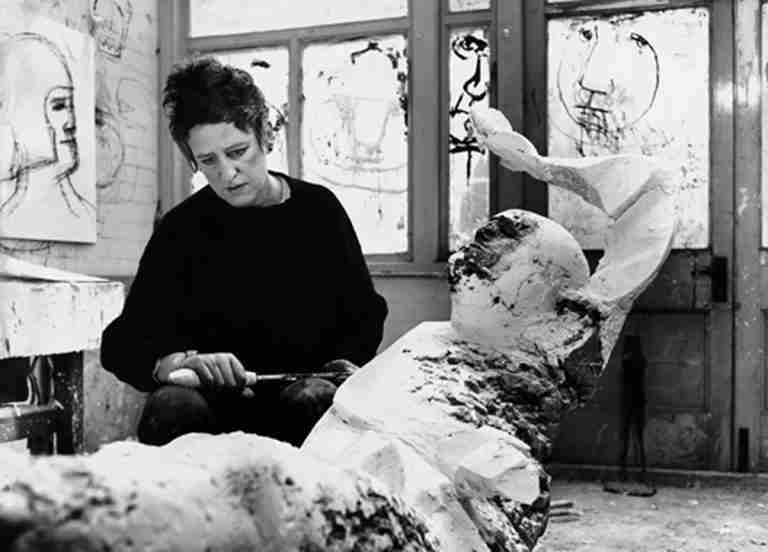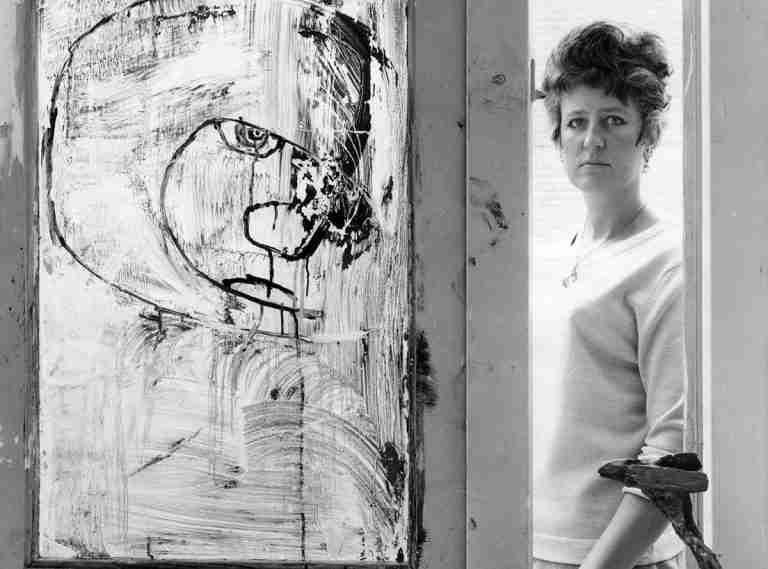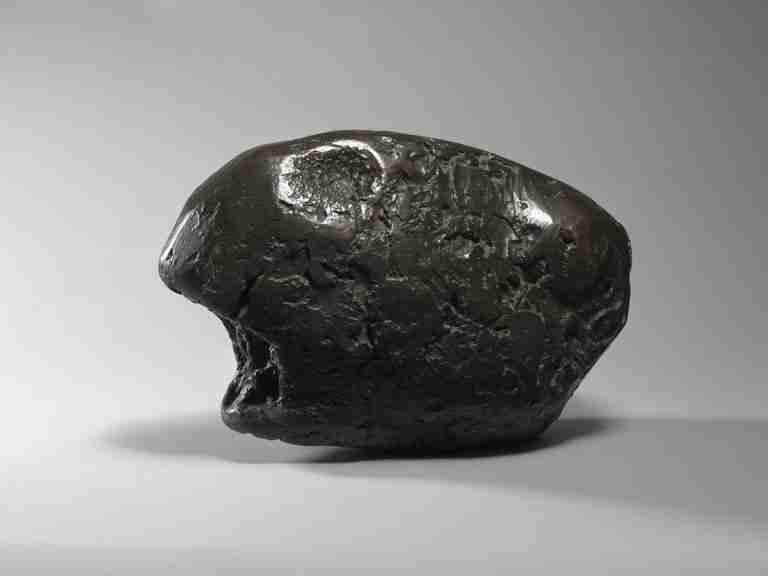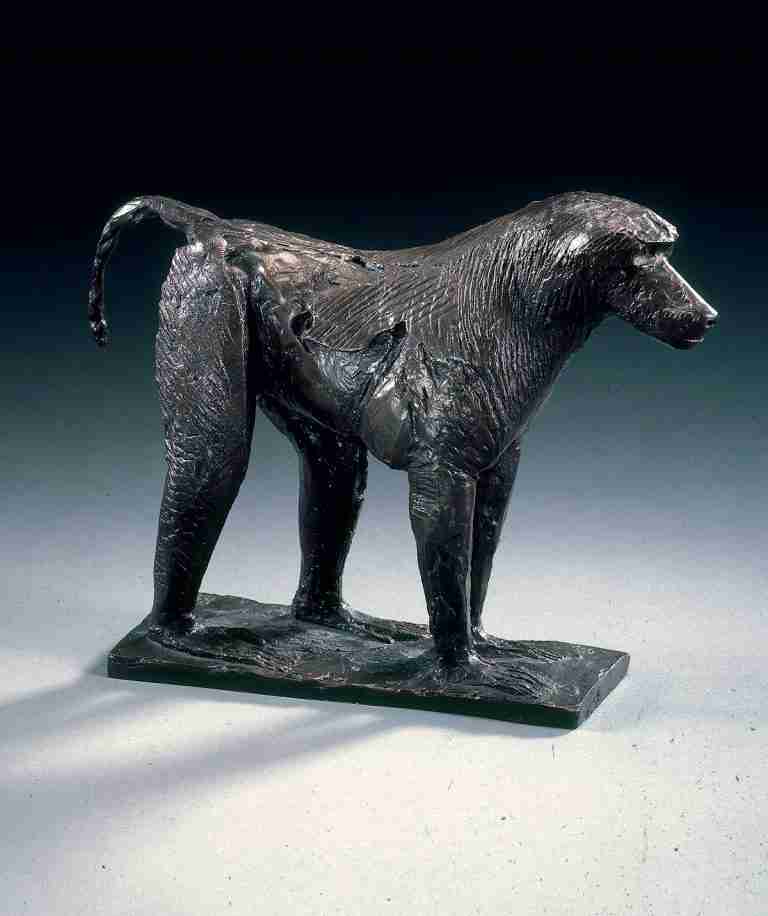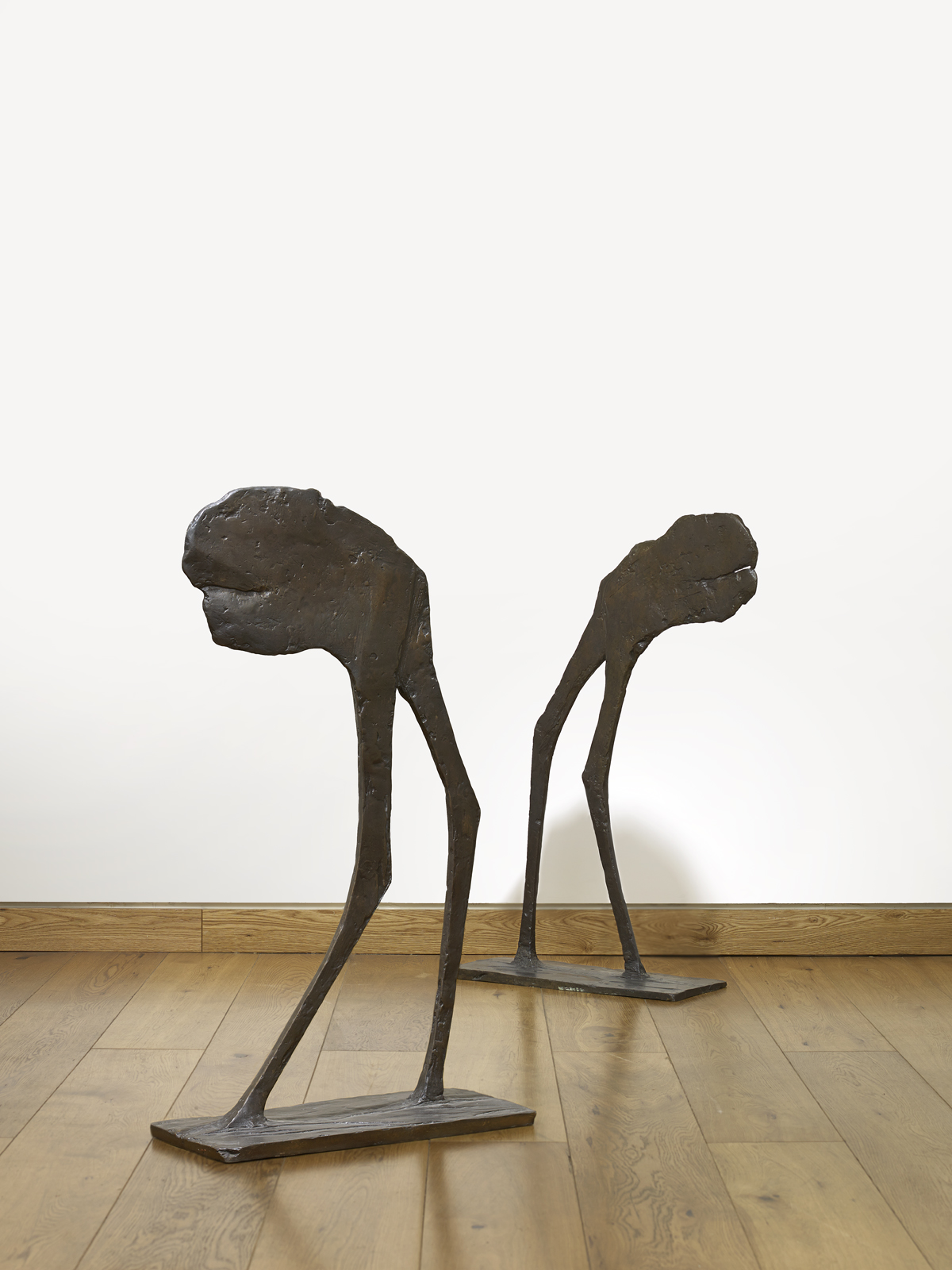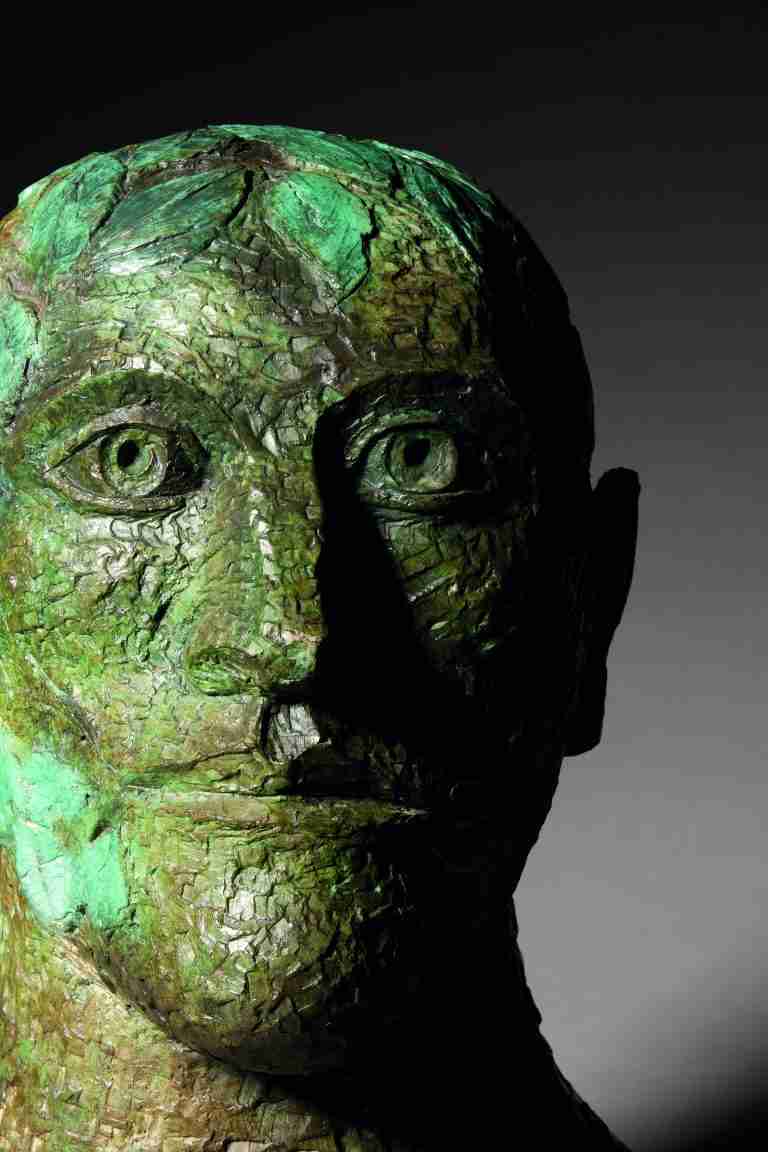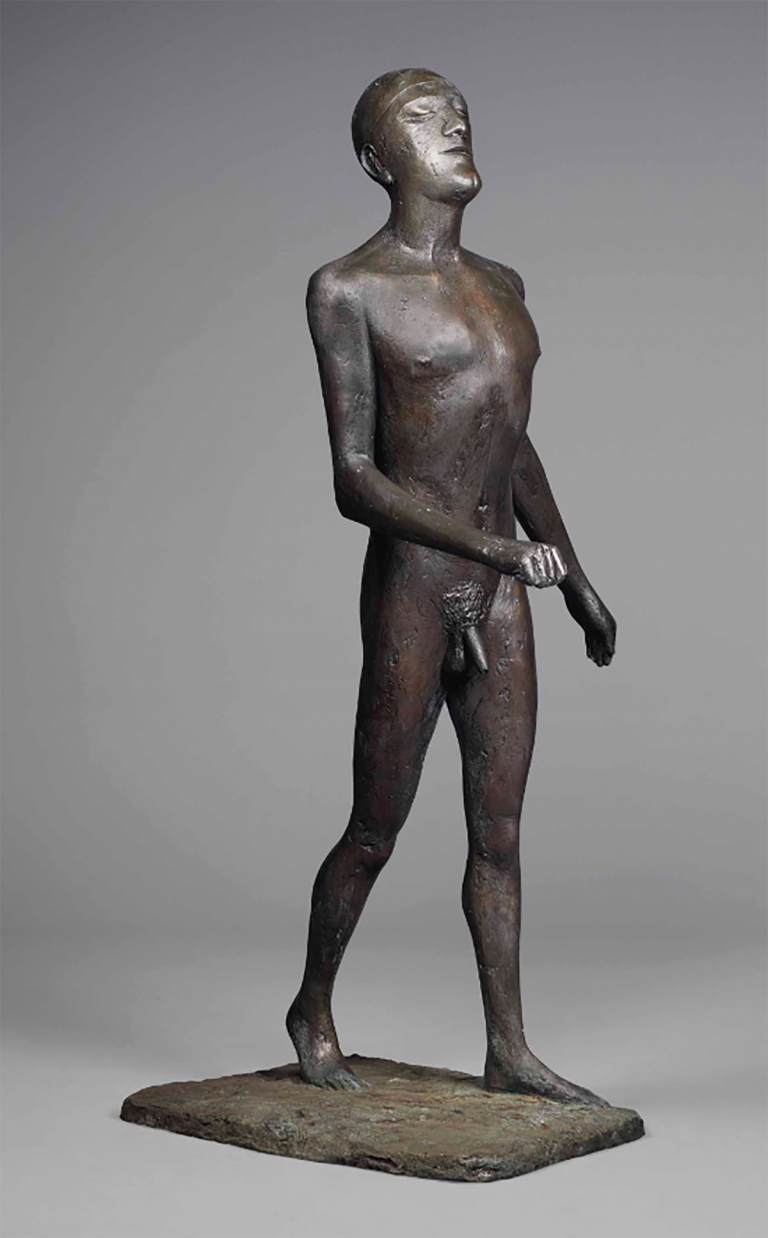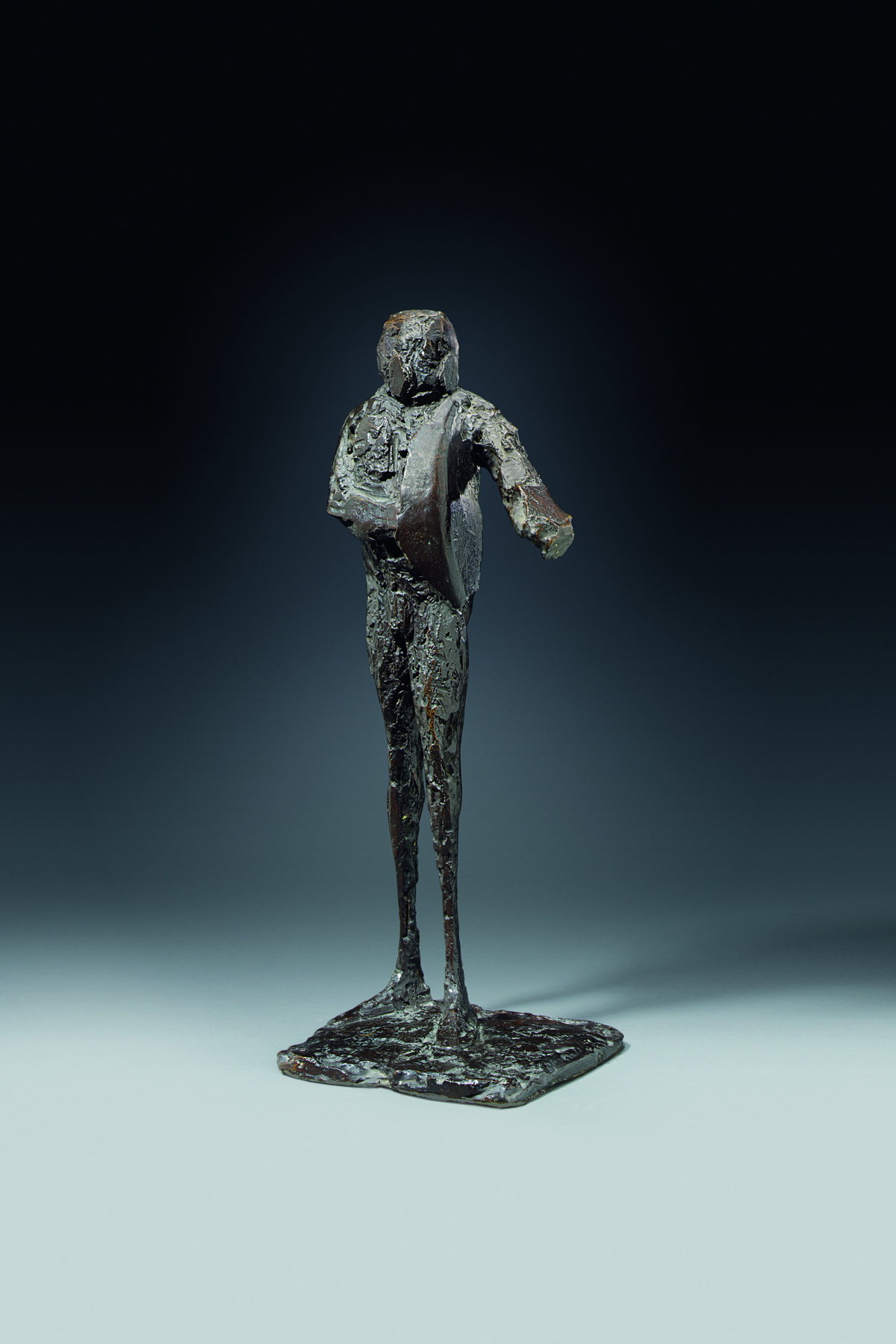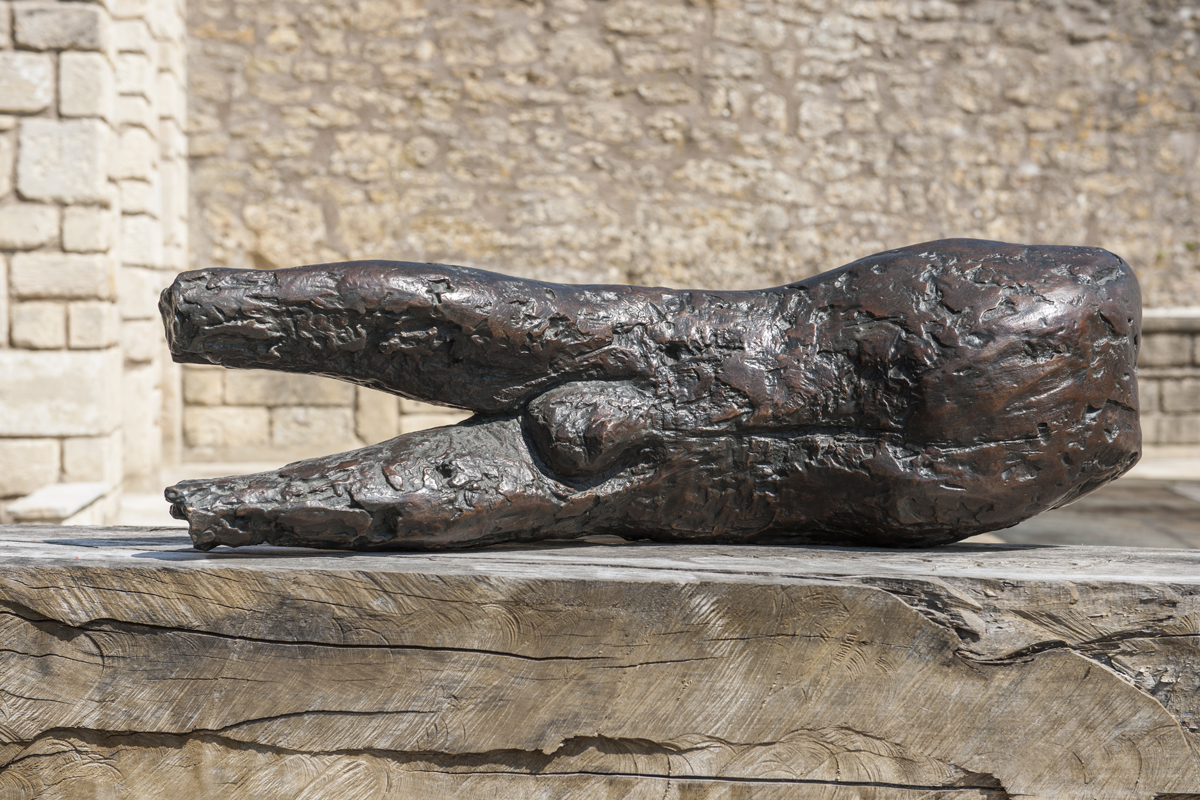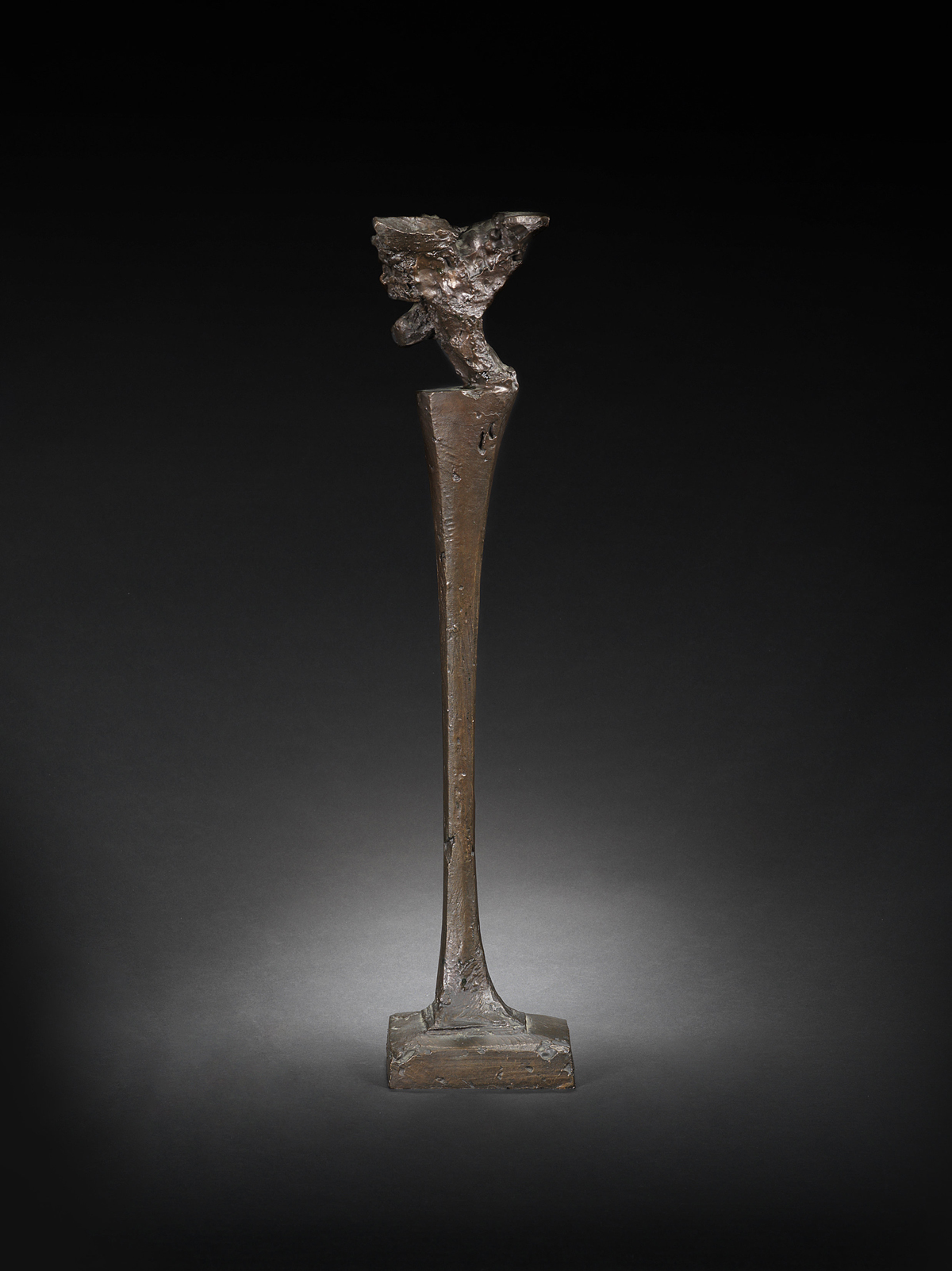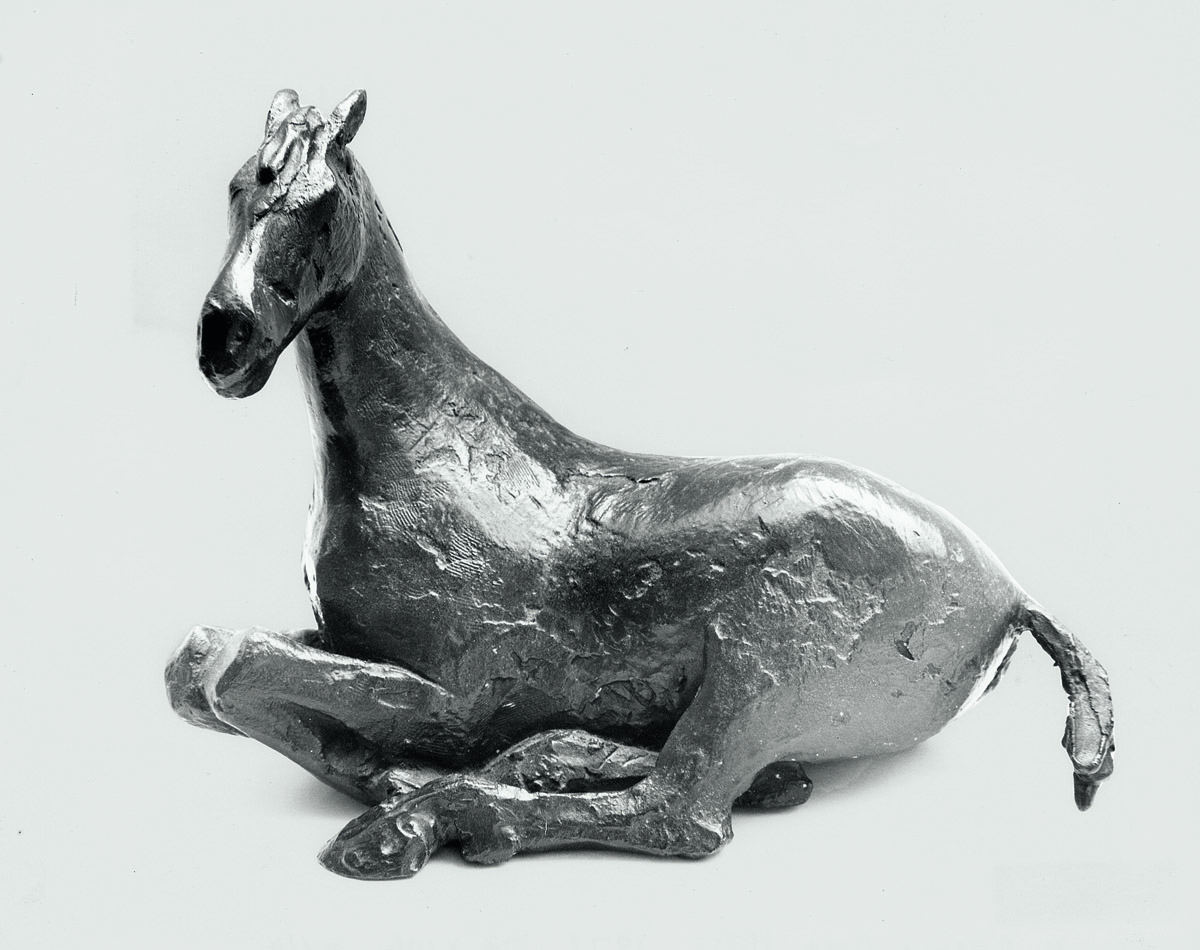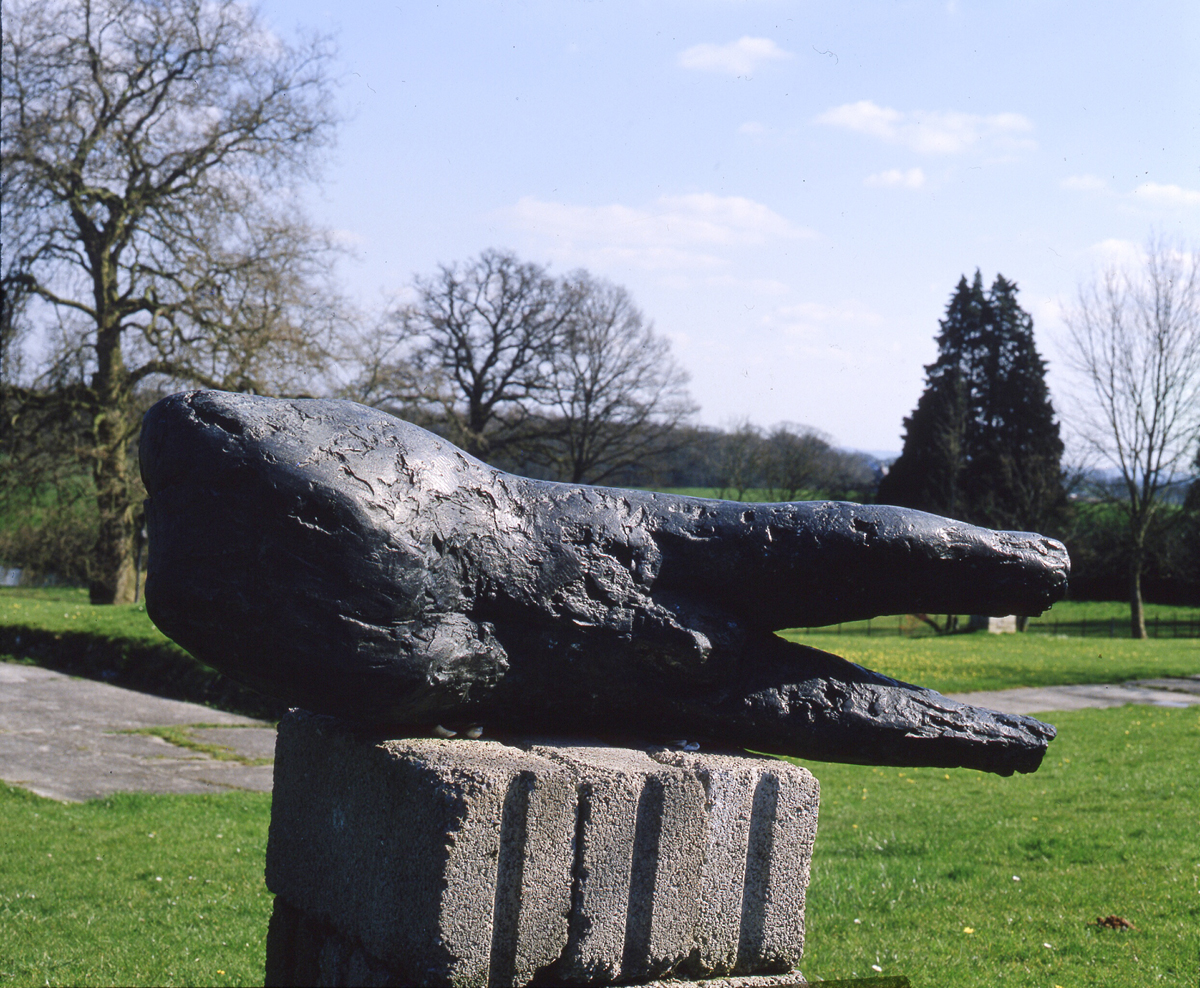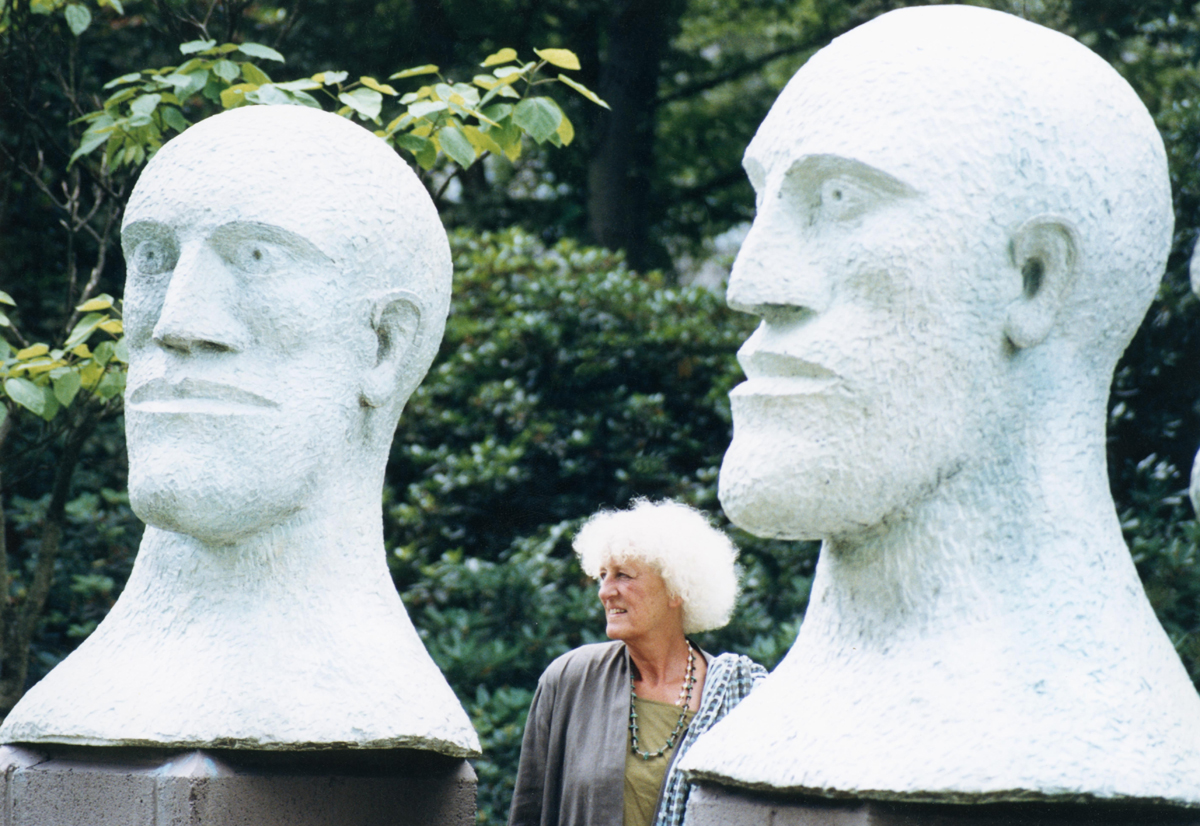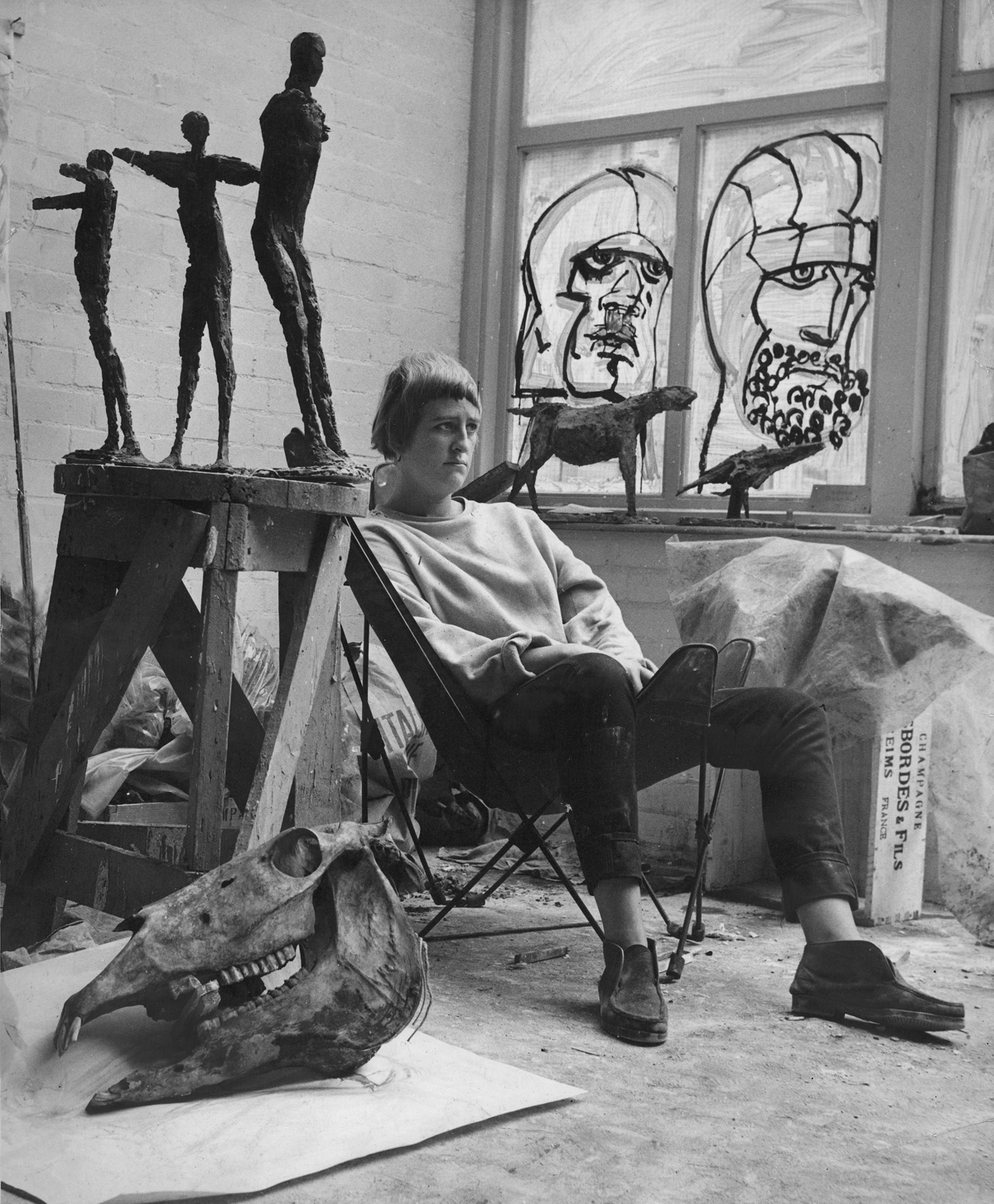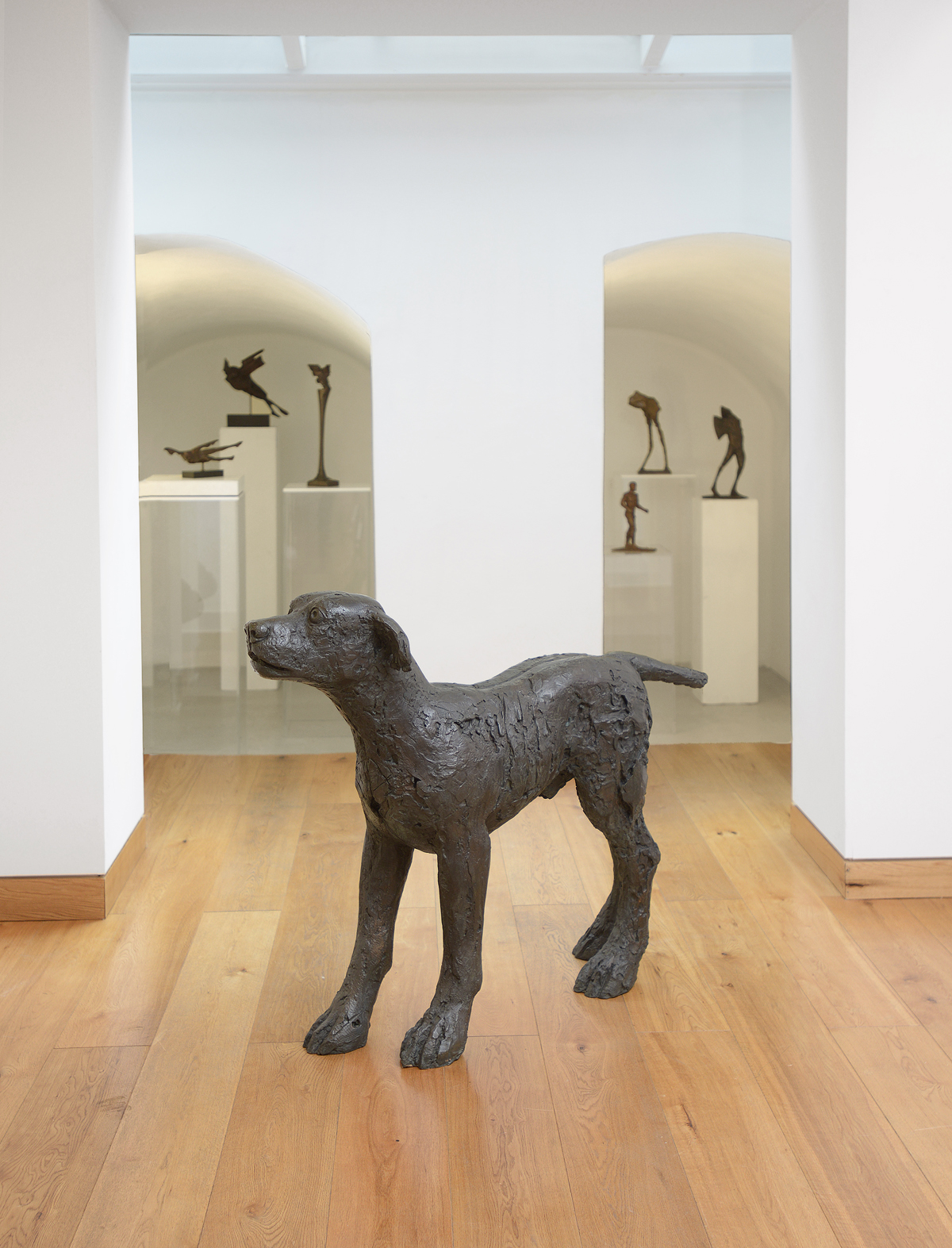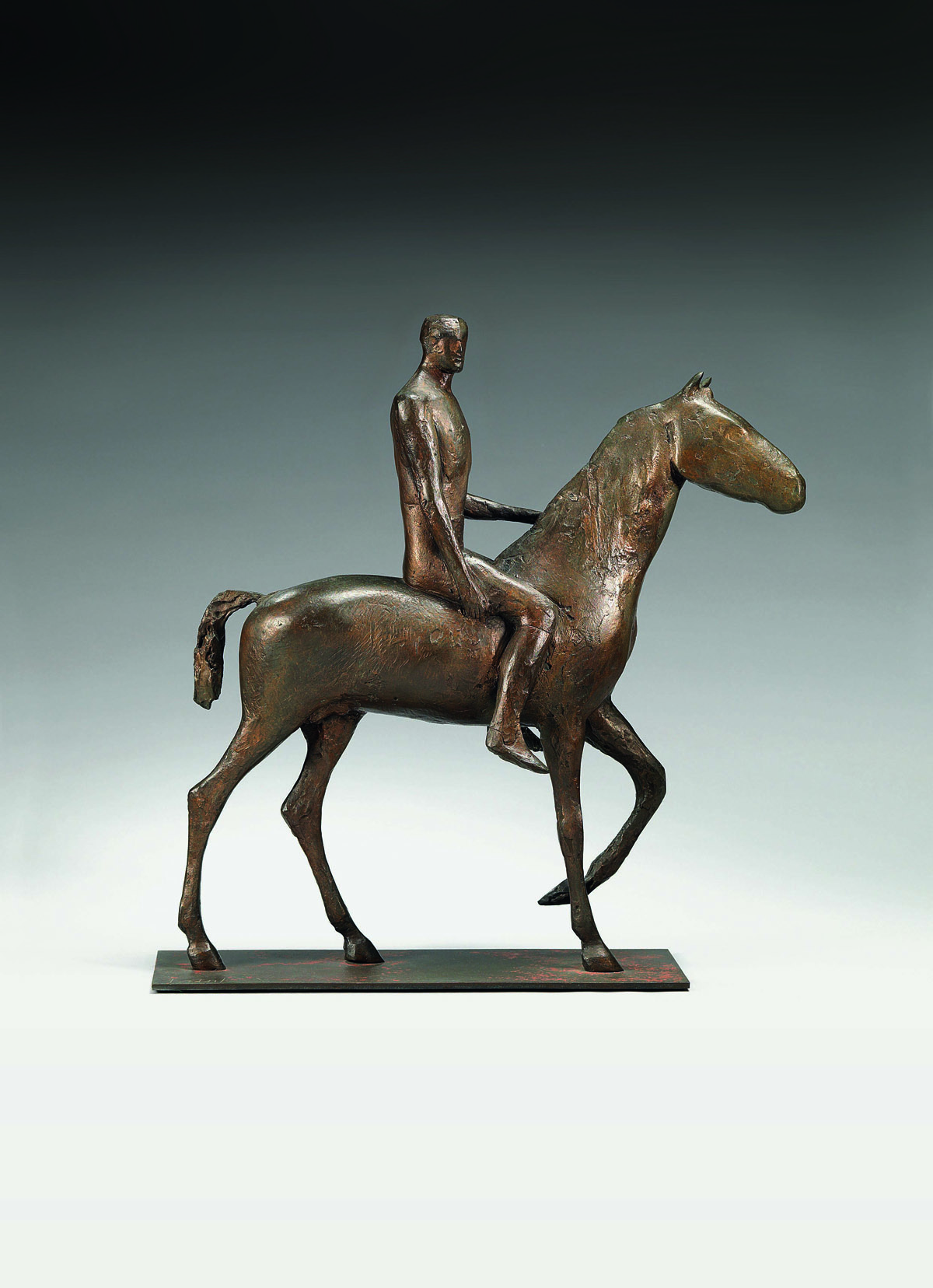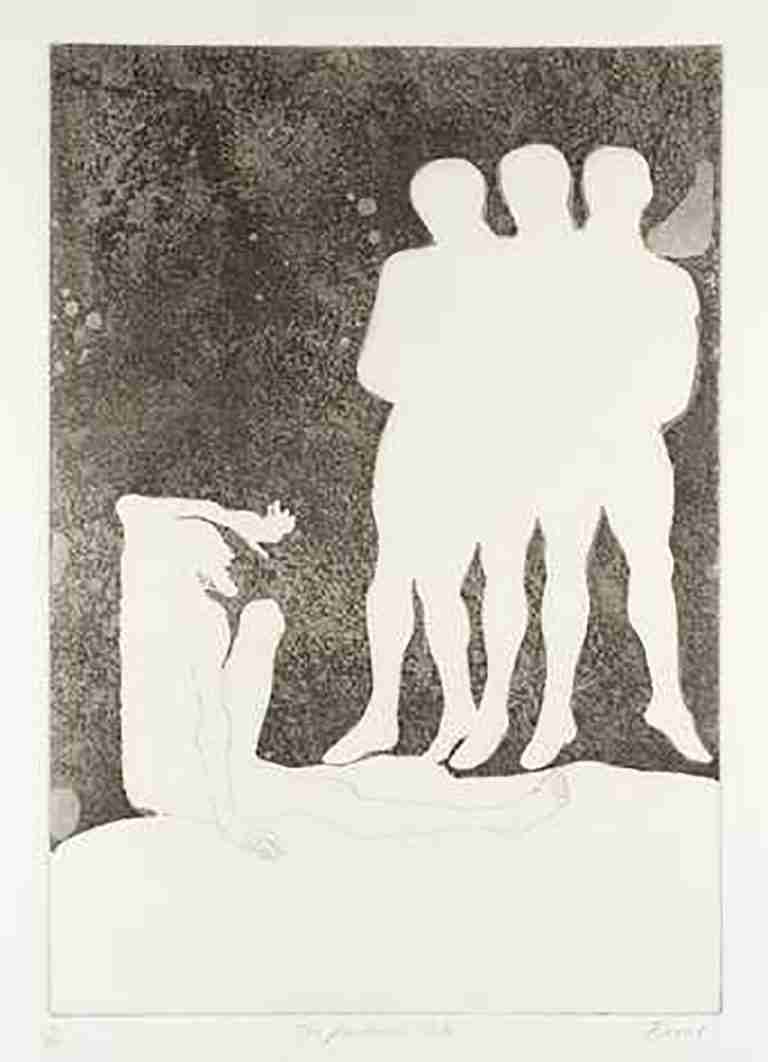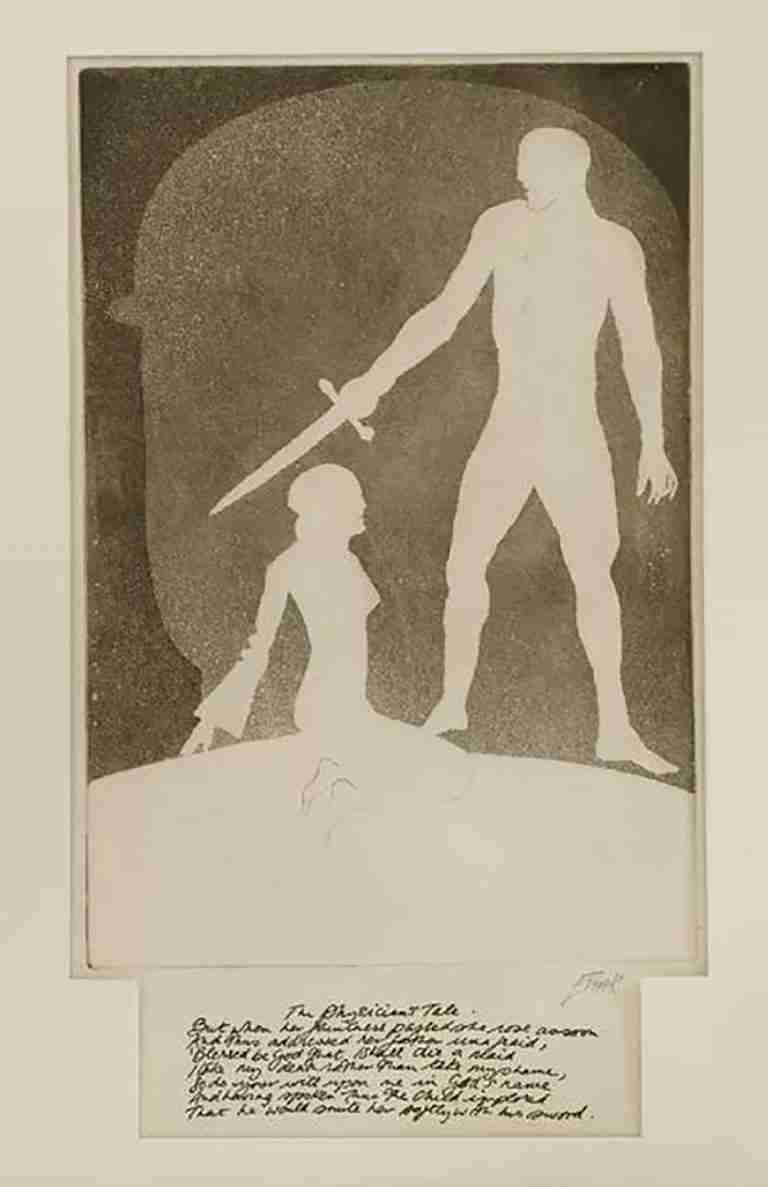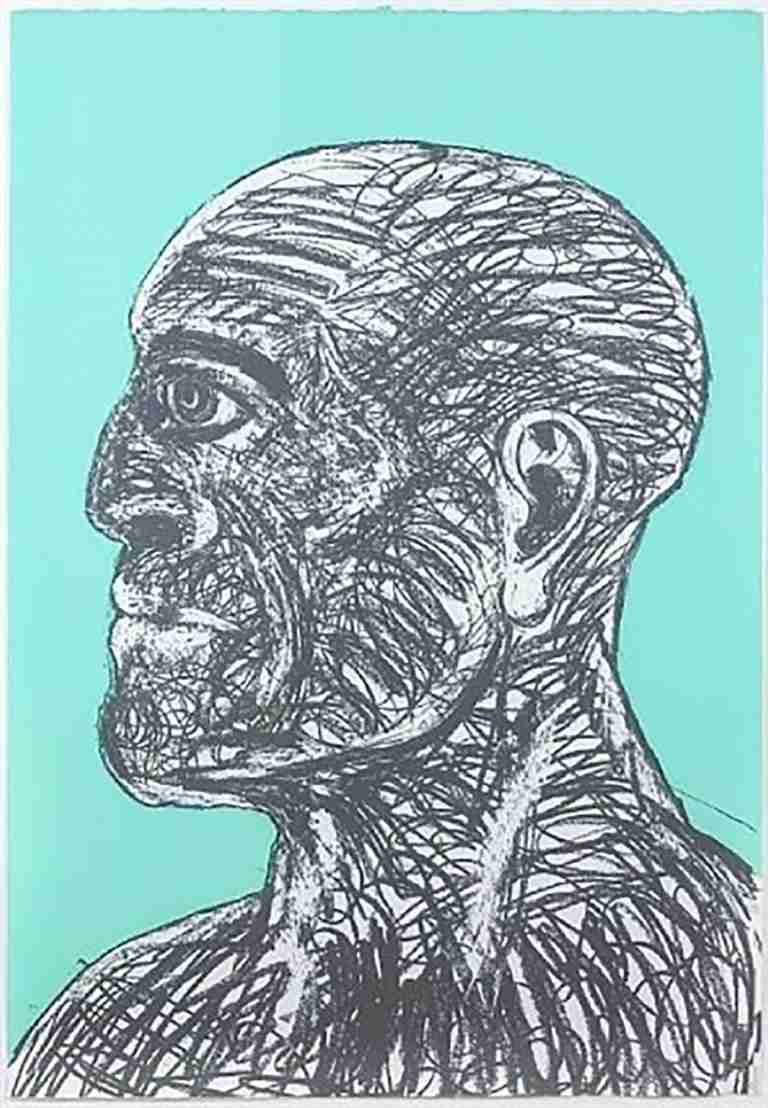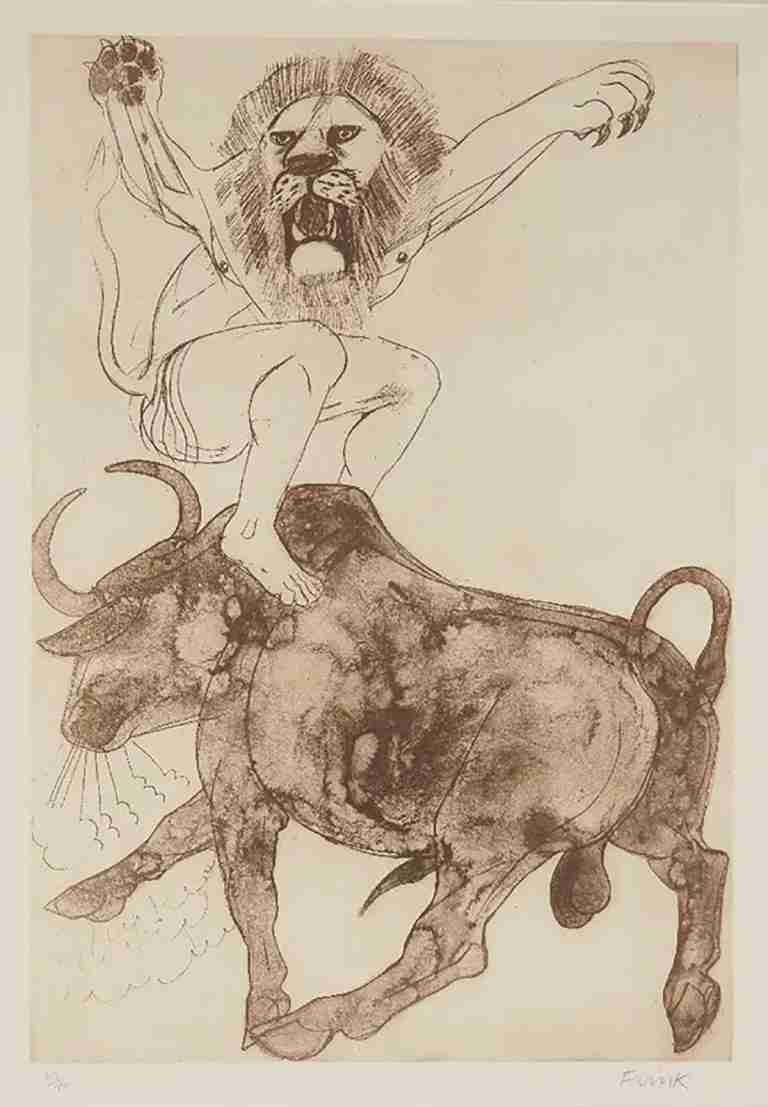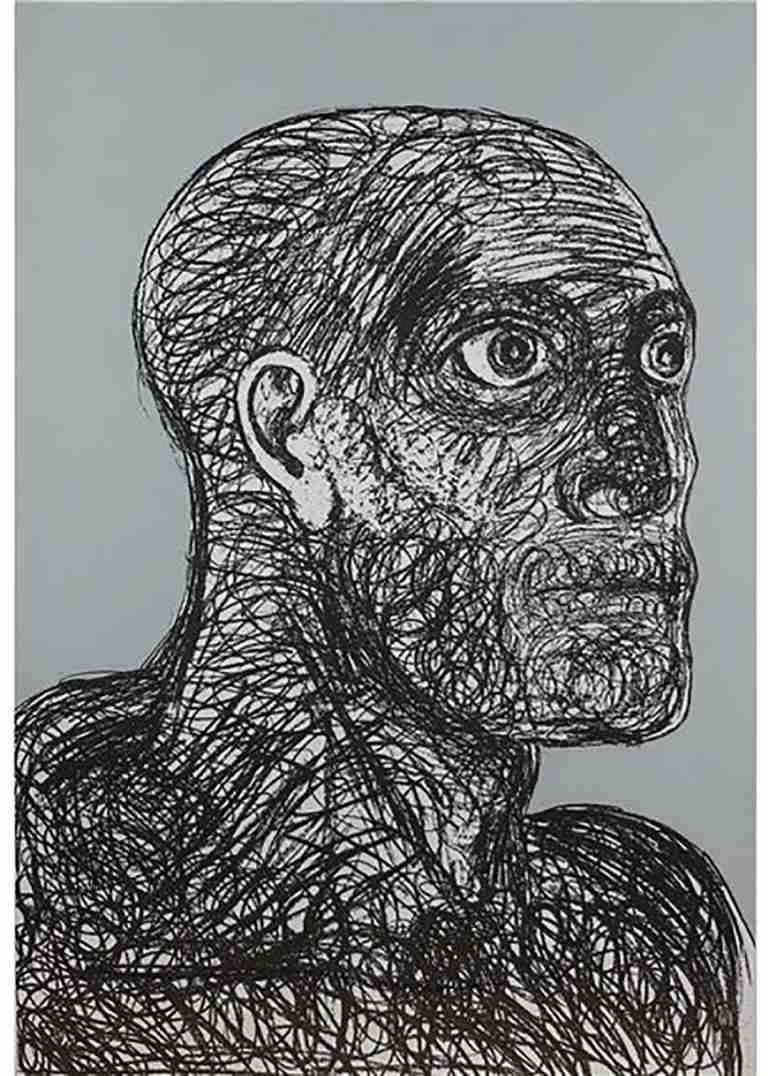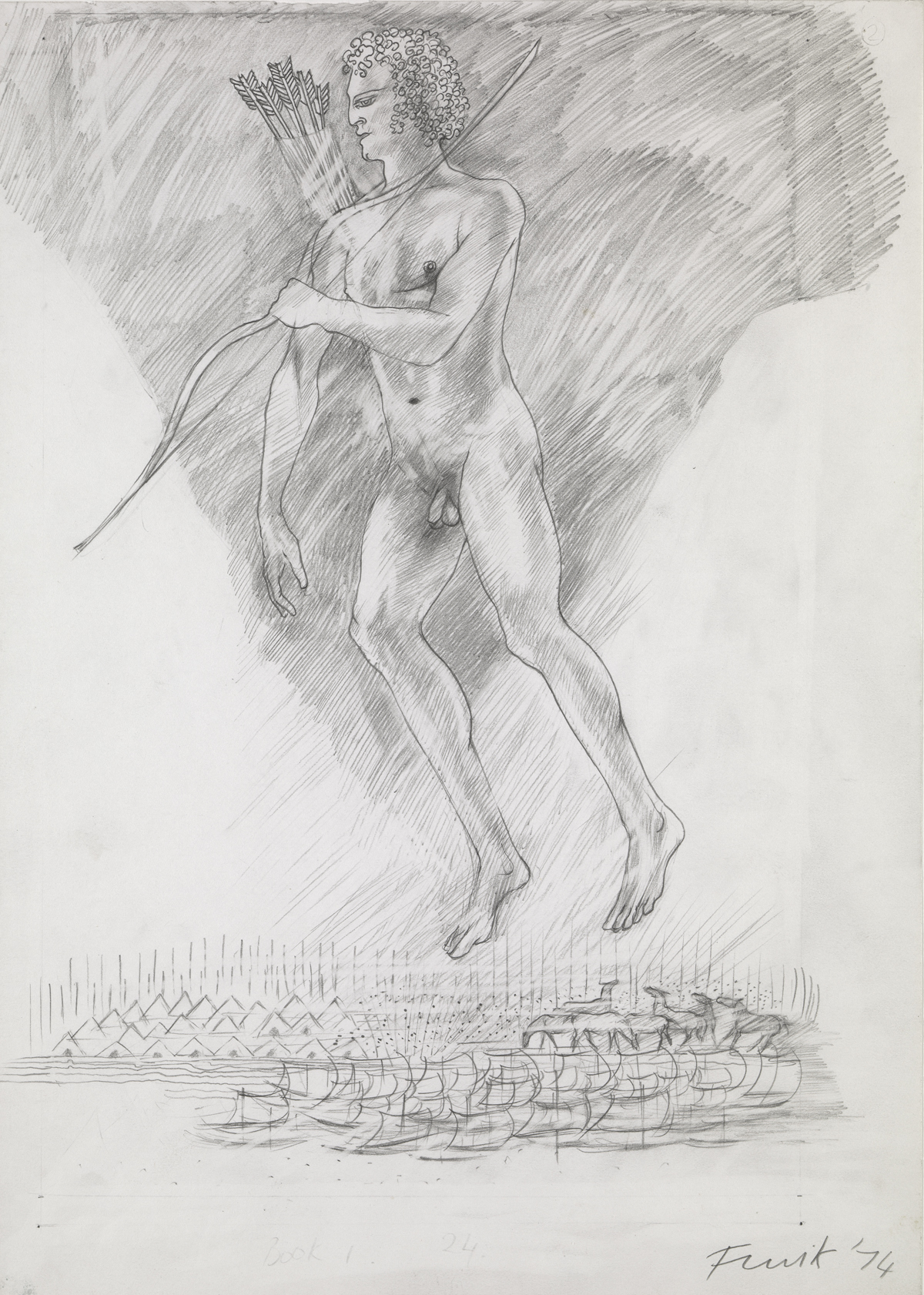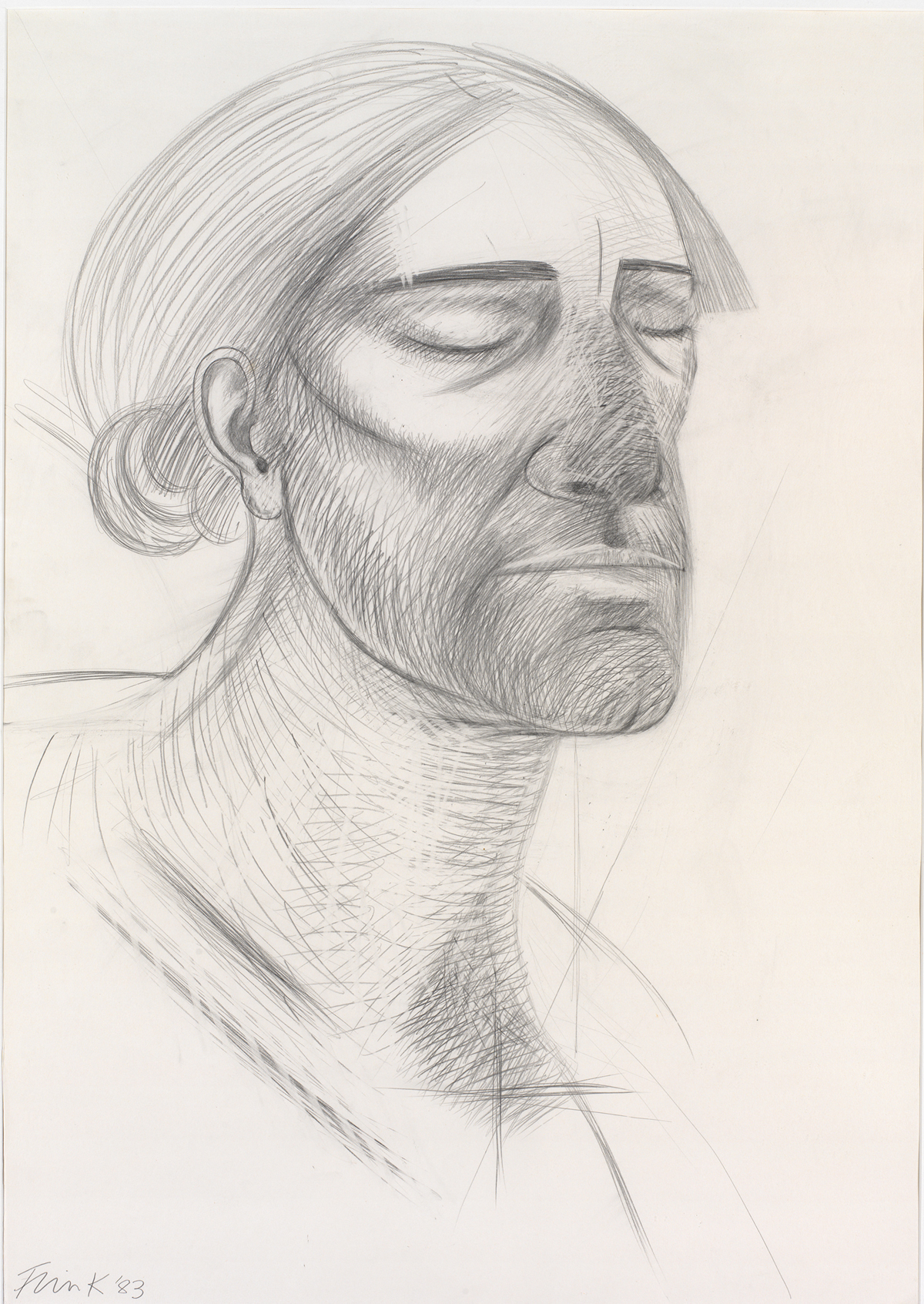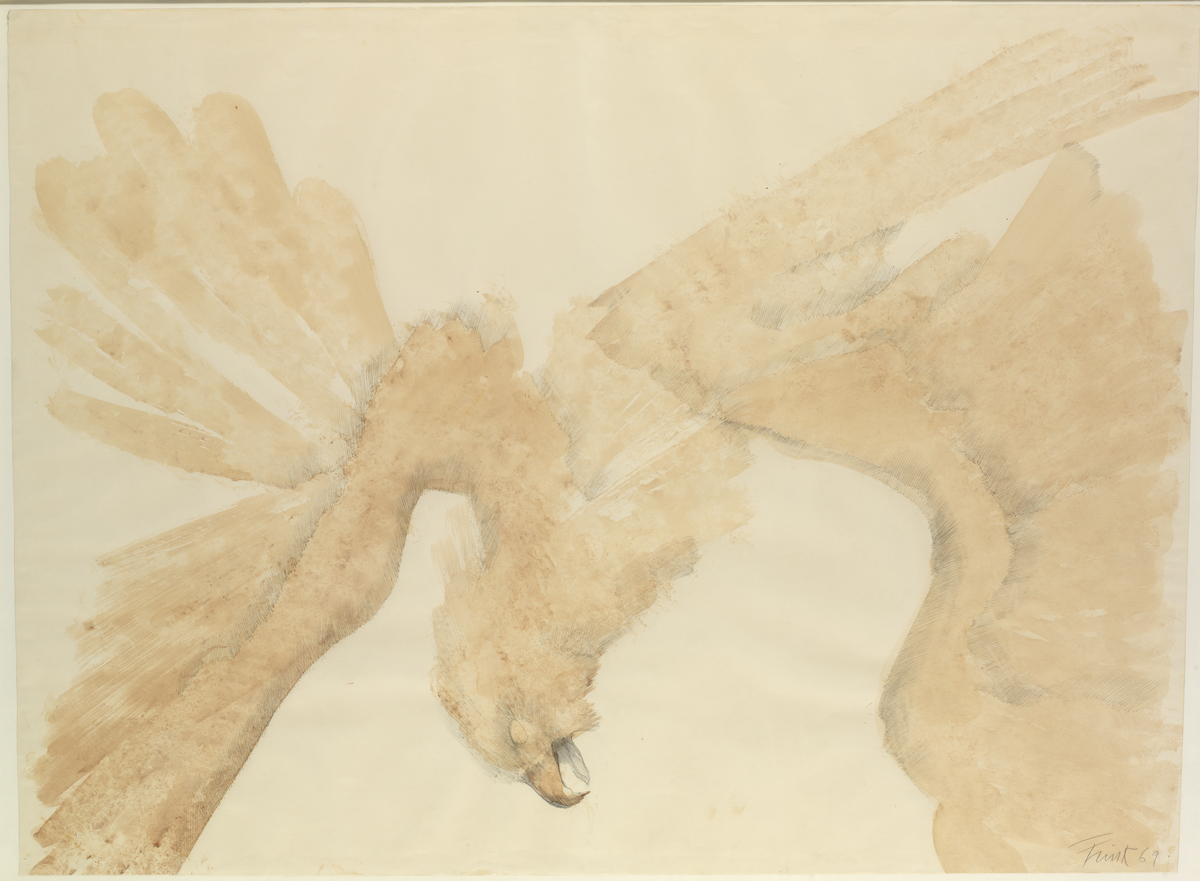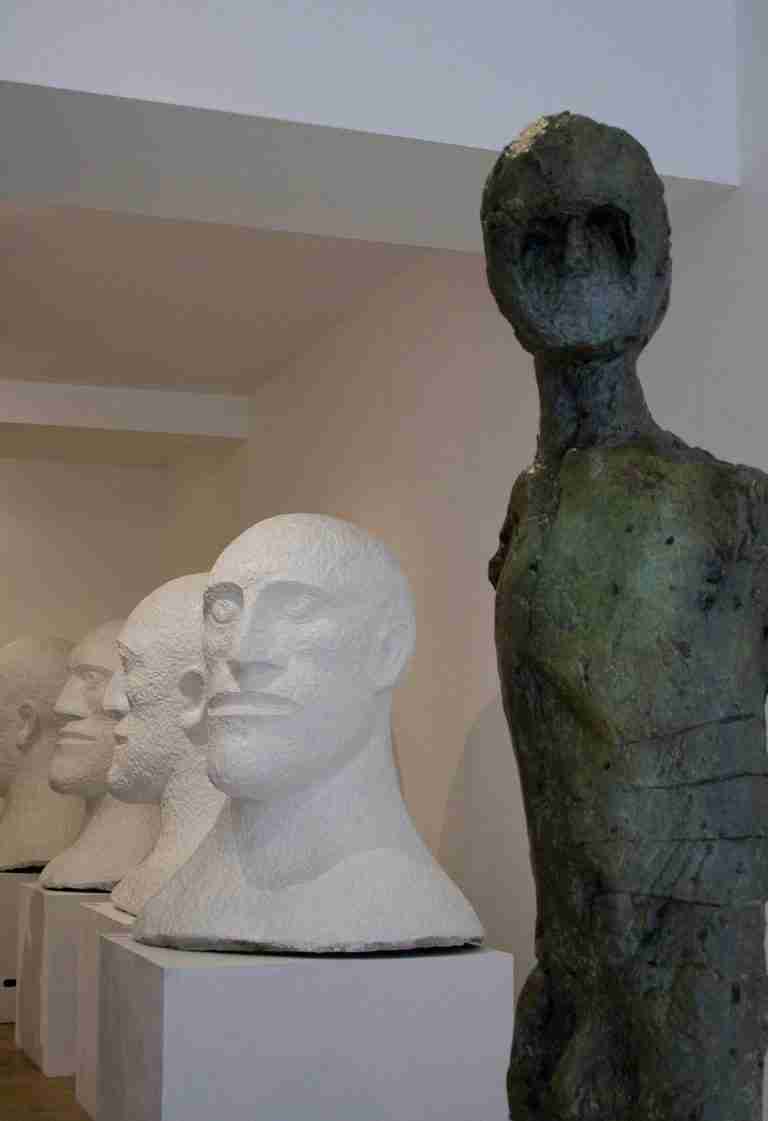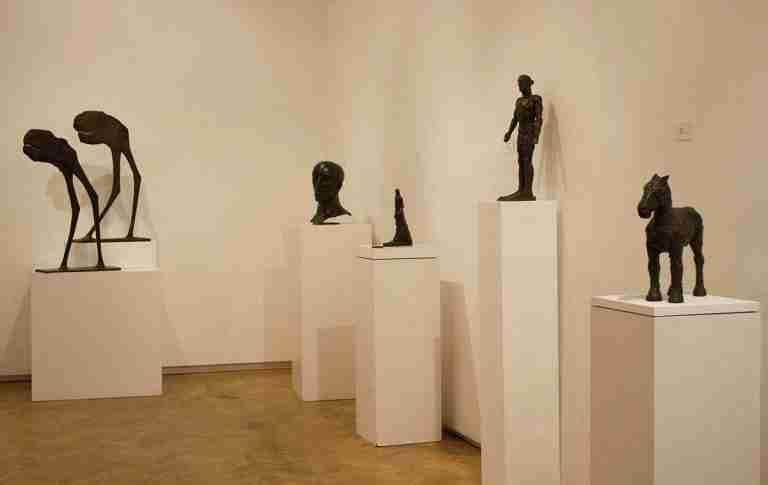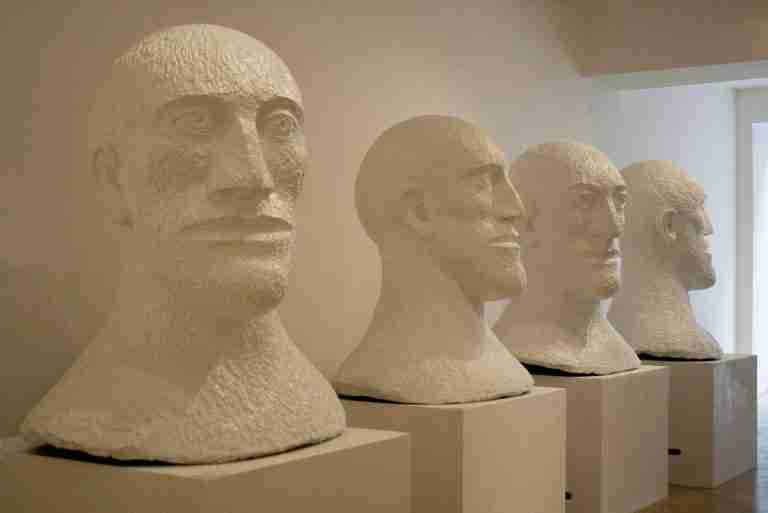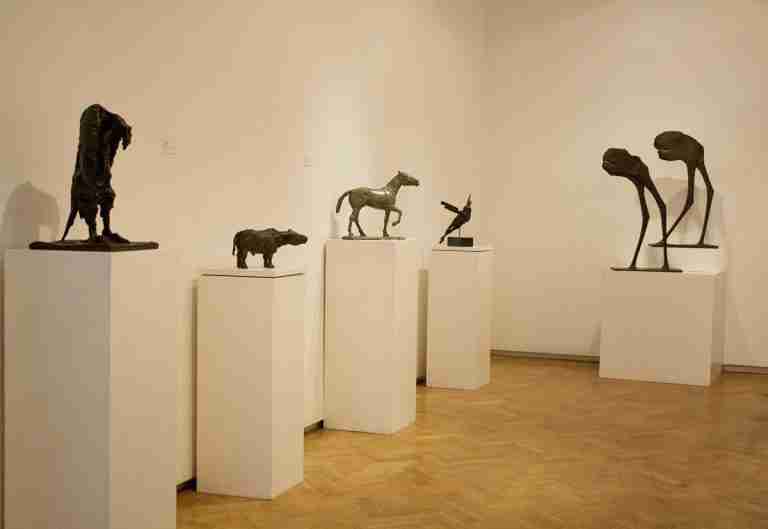1930 Born November 14 in Thurlow, Suffolk
1941-47 Attends Convent of the Holy Family, Exmouth Studies at Guildford School of Art
1949-53 Studies at Chelsea School of Art under Bernard Meadows and Willi Soukop
Exhibits with London Group Tate Gallery purchases Bird
1953-61 Teaches at Chelsea School of Art
1953 Wins prize in competition for Monument to the unknown political prisoner Arts Council purchases Bird
1954-62 Teaches at St Martin’s School of Art, London
1955 First solo exhibition at St George’s Gallery, London Marries Michel Jammet
1957 First major public commission from Harlow New town (Boar)
Commission for Bethnal Green housing scheme, Blind beggar and dog
Contemporary Arts Society purchases Wild Boar Joins Waddington Galleries
Commission for London County Council (Birdman) Birth of her son Lin Jammet
1960 Commission for façade of Carlton Tower, London Felton Bequest purchases Birdman (National Gallery of Victoria, Melbourne)
Commission for Coventry Cathedral (Eagle lectern)
Commission for Manchester Airport (Alcock and Brown memorial)
Commission for Ulster Bank, Belfast, Flying figures Divorces Michel Jammet Eagle installed as J F Kennedy memorial, Dallas, Texas
Commission for Our Lady of the Wayside, Solihull (Risen Christ) Marries Edward Pool
1965-67 Visiting Instructor, Royal College of Art, London
1966 Commission for Liverpool Cathedral (Alter cross)
Moves to France Illustrates Aesop’s Fables, published by Alistair McAlpine and Leslie Waddington Awarded CBE
1971 Elected Associate of the Royal Academy of Arts First shows in Royal Academy Summer Exhibition Illustrats Chaucer’s Canterbury Tales, published by Leslie Waddington Separates from Edward Pool and returns to England Illustrates Homer’s Odyssey, published by The Folio Society
Commission for de Beers, trophy for King George VI and Queen Elizabeth Stakes Com mission for Dover Street, London (Horse and Rider)
Marries Alexander Csáky
1975 Commission for Paternoster Square, London (Paternoster)
Illustrates Homer’s Illiad, published by The Folio Society Elected to board of trustees, British Museum
1976 Appointment to the Royal Fine Art commission
Moves to Dorset Elected Royal Academician Awarded Honorary Doctorate by University of Surrey
Commission for Milton Keynes (Horse)
1980 Commission for Goodwood Racecourse (Horse) Appointed Trustee, Welsh Sculpture Trust
Awarded DBE Com mission for Brixton Estates, Dunstables (Flying Men)
Awarded Doctorate by Royal College of Art
Commission for All Saints Church, Basingstoke (Christ)
Illustrates Kenneth McLeish’s Children of the Gods, published by Longman
Awarded Honorary Doctorate by Open University
Awarded Doctorate of Literature by University of Warwick
1984 Solo Exhibitions: St Margaret’s Church, King’s Lynn, Norfolk; University of Surrey, Guildford Group Exhibitions: British Artists’ Books 1970-1983, Atlantis Gallery, London; Drawings, School of Art, Guildford, Surrey; Man and Horse, Metropolitan Museum, New York
1985 Solo Exhibitions: Royal Academy of Arts, London; Fitzwilliam Museum, Cambridge; Waddington Graphics, London
1986 Solo Exhibitions: Beaux Arts, Bath; Poole Arts Centre, Poole, Dorset; David Jones Art Gallery, Sydney; Read Stremmel, San Antonio, Texas Group Exhibitions: Menagerie, Yorkshire Sculpture Park, Bretton Hall, Wakefield; Barbican Centre, London; Chicago Art Fair
1987 Solo Exhibitions: Beaux Arts, Bath; Coventry Cathedral, Warwickshire; Chesil Gallery, Portland, Dorset (graphics); Arun Art Centre, Arundel, Sussex; Bohun Gallery, Henley-on-Thames, Oxfordshire Group Exhibitions: Abbot Hall, Cumbria; Royal College of Art, London; Albemarle Gallery, London; Kingfisher Gallery, Edinburgh; Summer Exhibition, Royal Academy, London; Salisbury Ecclesiastical Festival, Wiltshire; Thomas Agnew, London; Self Portrait, Art Site, Bath, Avon (touring)
1988 Awards: Honorary Doctorate, University of Cambridge; Honorary Doctorate, University of Exeter Solo Exhibitions: Keele University, Staffordshire; Ayling Porteous Gallery, Chester, Cheshire (graphics)
Group Exhibitions: Expo ’88, Brisbane; Harris Museum and Art Gallery, Preston, Lancashire; Angela Flowers Gallery, London
1989 Awards: Honorary Doctorate, University of Oxford; Honorary Doctorate, University of Keele; Retires from the board of Trustees of the British Museum Solo Exhibitions; Hong Kong Festival; Fischer Fine Art, London; Lumley Cazalet, London (prints); New Grafton Gallery, London (drawings) Group Exhibitions: President’s Choice, Royal Academy and the Arts Club, London; Sacred in Art, Long and Ryle, London; The National Rose Society, Lincolnshire; Grape Lane Gallery, York; Tribute to Turner, Thomas Agnew, London
1990 Award: Honorary Doctorate, University of Manchester Solo Exhibitions: The National Museum for Woman in the Arts, Washington D.C.; Compass Gallery, Glasgow
1991 Award: Honorary Doctorate, University of Bristol Solo Exhibitions; Galerie Simonne Stern, New Orleans; Terry Dintenfass Gallery, New York; Chesil Gallery, Portland, Dorset; Bohun Gallery, Henley-on-Thames, Oxfordshire Group Exhibition: Summer Exhibition, Royal Academy, London
1992 Award: Companion of Honour
1993 Dies 18 April
Exhibitions since 1993
Memorial Exhibition, Beaux Arts, London
Beaux Arts London, solo exhibitions: 1995, 1997, 1998, 2000, 2002, 2009, 2013, 2015, 2018, 2024
Elisabeth Frink, Memorial Exhibition, Yorkshire Sculpture Park
Goodwood Sculpture Park, Chichester
1997 Salisbury Festival Exhibition (with the Edwin Young Trust, Salisbury and Dorset County Museum, Dorchester)
1997 Elisabeth Frink 1930-1993, Beaux Arts, London
1998 Kilkenny Festival Exhibition, Ireland
1998 Lumley Cazalet, London
Fifty Years of British Sculpture, Den Haag, Netherlands
Witley Court Sculpture Park Exhibition, Worcester
2000 Beaux Arts, London
2001 Elisabeth Frink, Djanogly Art Gallery, Nottingham University
2002 Beaux Arts, London Head On(Art with the brain in mind),
The Science Museum, London (Wellcome Trust)
Elisabeth Frink, Yorkshire Sculpture Park
Beaux Arts, London
2006 Beaux Arts, London
2009 Beaux Arts, London 2011 Elisabeth Frink, Beaux Arts London
2013 “Elisabeth Frink Catalogue Raisonné of Sculpture 1947-93”, published by Lund Humphries, to commemorate 20 years since her death Elisabeth Frink (catalogue), essay by Annette Ratuszniak, Beaux Arts, London
2015 Elisabeth Frink, Beaux Arts London
2015 – 2016 Elisabeth Frink: The Prescence of Sculpture, Djanogly Gallery Lakeside Arts, Nottingham
2017 Elisabeth Frink: Transformation, Hauser and Wirth, Bruton
2018 Elisabeth Frink, Beaux Arts London
2018- 19 Elisabeth Frink: Humans and other Animals Sainsbury Centre for Visual Arts, University
of East Anglia, Norfolk
2021 Man is Animal Gerhard Marcks Haus, Bremen, Germany
2023 A View from Within, Dorset Museum and Art Gallery, Dorchester
2024 A Celebration, Beaux Arts, London
Publications
1968 Gray, R., Frink, Bratby, Barnes, Jackson, East Kent and Folkestone Arts Centre 1
972 Mullins, E., The Art of Elisabeth Frink, Lund Humphries, London
1984 Elisabeth Frink, Sculpture, Catalogue Raisone é , Harpvale Press, Wiltshire
1985 Elisabeth Frink: Sculpture and Drawings 1952-1984 (catalogue), curated by Sarah Kent, Royal Academy of Arts, London 1989 Cameron, N., and Frink, E., Elisabeth Frink: Recent Sculptures and Drawings (catalogue), Fischer Fine Art, London
1990 Elisabeth Frink: Sculpture and Drawings 1950-1990 (catalogue), The National Museum of Women in the Arts, Washington, D.C. 1994 Elisabeth Frink (catalogue), introduction by Peter Murray; Yorkshire Sculpture Park, Wakefield
1994 Lucie-Smith, E., and Frink, E., Frink, a Portrait, Bloomsbury
1994 Sculpture and Drawings 1965-1993 (catalogue), preface by Edward Lucie-Smith, Lumley Cazalet, London 1994 Lucie-Smith, E., Elisabeth Frink: Sculpture since 1984 and Drawings, Art Books International
1997 Elisabeth Frink 1930-1993 (catalogue), foreword by Edward Lucie-Smith, Beaux Arts, London
1997 Elisabeth Frink: Sculpture and Drawings 1966-1993 (catalogue), Lumley Cazalet, London
1997 Elisabeth Frink – A certain unexpectedness – Sculpture, Graphics and Textiles (catalogue), foreword by Canon Jeremy Davies; ‘Elisabeth Frink’ by Edward Lucie-Smith, ‘A certain unexpectedness’ by Annette Downing; ‘Man and the Animal World’ by John Hubbard, Salisbury Festival with the Edwin Young Trust, Wiltshire County Council and Dorset County Museum Gardiner, S., Frink, The official biography of Elisabeth Frink, Harper Collins Wiseman, C., Original Prints, Catalogue Raisonné, Art Books International 2002 Elisabeth Frink, Sculptures and Drawings (catalogue), foreword by Edward Lucie-Smith, Beaux Arts, London
2004 Elisabeth Frink (catalogue), foreword by Elspeth Moncrieff, Beaux Arts, London
2006 Elisabeth Frink (catalogue), foreword by Brian Phelan, Beaux Arts, London
2009 Elisabeth Frink (catalogue), essay by Germaine Greer, Beaux Arts, London
2011 Elisabeth Frink (catalogue) essay by Julian Spalding, Beaux Arts London
2013 “Elisabeth Frink Catalogue Raisonné of Sculpture 1947-93”, published by Lund Humphries, to commemorate 20 years since her death Elisabeth Frink (catalogue), essay by Annette Ratuszniak, Beaux Arts, London
2015 Elisabeth Frink (catalogue), essay by Andrew Lambirth, Beaux Arts, London
2015 – 2016 Elisabeth Frink: The Prescence of Sculpture, Djanogly Gallery Lakeside Arts, Nottingham – Illustrated catalogue to to accompany by Annette Ratuszniak (Curator, Frink Estate) with Neil Walker (Head of Visual Arts Programming).
2018 Elisabeth Frink (catalogue) essay by Andrew Lambirth, Beaux Arts London
2018- 19 Elisabeth Frink: Humans and other Animals (catalogue) Sainsbury Centre for Visual Arts, University of East Anglia, Norfolk
2021 Man is Animal (catalogue), Gerhard Marcks Haus, Bremen, Germany Introduction by Arie Hartog, ‘From Hero to Zero (and back again) About the heads of Elisabeth Frink’ by Feico Hoekstra, ‘In their Nature’ by Peter Murray,
‘A Very personal look at Antiquity: The Riace Warriors by Elisabeth Frink ‘ by Veronika Wiegartz
2023 A View from Within, (catalogue) Dorset Museum and Art Gallery, Dorchester. Introduction by Elizabeth Selby, ‘Elisabeth Frink: A View From Within’ by Annette Ratuszniak, ‘Remembering Frink’ by Lucy Johnston, ‘In Search of Humanity: The Early Career of Elisabeth Frink’ by Wilfrid Wright, ‘Elisabeth Frink at Dirset Museum & Art Gallery’ by Elizabeth Selby and Emma Talbot.
2024 A Celebration, (catalogue) Beaux Arts, London
Public purchases since 1993
1997 Dying King
1963 Torso
1958 Goggle Head
1968 Riace I (Walking Man)
1987 Tate Collection Public Collections
Great Britain Arts Council, London Atkinson Art Gallery, Southport Birmingham City Museums and Art Gallery Bolton Museum and Art Gallery British Museum, London Dorset County Museum, Dorchester East Haydock Branch Library, St. Helens Fitzwilliam Museum, Cambridge Ipswich Museums and Galleries Leicestershire Museums Middlesbrough Art Gallery Oldham Art Gallery Portsmouth City Museum and Art Gallery Royal Academy of Arts, London Royal Air Force Museum, Hendon, London Salford Art Gallery Salisbury and South Wiltshire Museum, Salisbury Scottish Gallery of Modern Art, Edinburgh Sheffield City Art Galleries Sutton Manor Arts Centre, Winchester Tate Gallery, London Walker Art Gallery, Liverpool Whitworth Gallery, University of Manchester
United States of America Carnegie Institute, Museum of Art, Pittsburgh Chrysler Museum, Provincetown Joseph Hirshhorn Collection, Washington Museum of Modern Art, New York
Australia Brisbane Art Gallery National Gallery of Victoria, Melbourne
South Africa South African National Gallery, Cape Town
Public Places Yorkshire Sculpture Park Royal Opera House, London Warwick University Grosvenor Square , London Outside WHSmith headquarters, Swindon, Wiltshire K & B Plaza, New Orleans, USA Dorchester Hospital, Dorset King’s College, Cambridge Exchange Square , Hong Kong Bristol Museum The Montague Shopping Centre, Worthing Royal College of Physicians, London Chatsworth House, Derbyshire Fitzwilliam Museum, Cambridge West façade, Anglican Cathedral, Liverpool


